Messier Marathon Part 5 (On to Sunrise)
By this point, only one other person was left and he was packing up. Soon, I was all alone, waiting for the last few objects to rise.
M6 is an open cluster in Scorpius:
And M7 is another open cluster next to it. This was shot through trees.
M16, the Eagle Nebula follows. I didn’t get much of the nebula here, but I did get the cluster:
Then M17, the Swan Nebula:
And M18, an open cluster nearby:
M24 is a gigantic star cloud in Sagittarius. It’s not much to look at here, but it’s mainly just clumps of the Milky Way:
Then M25:
And M23:
The next three objects are close-by. M8, the Lagoon Nebula, M20, the Trifid Nebula and M21, an open cluster. The latter two are obvious. I barely caught part of M8 in this picture (lower right).
Then M28:
M22, an amazing globular cluster:
M69
and M70:
At this point the noise is getting very bad. M54 is next:
M55 should be next, but I was unable to capture this due to it being very low. M75 was the next one I got:
Then we hit the last two “easy-to-find” objects of the night. M15:
and M2:
Then comes M72, a glob in Aquarius. This is very hard to see visually. It’s right in the middle.
The last one I got was M73, an asterism of four stars in Aquarius (right in the middle).
And that was that. M30 is not really possible from this latitude, and especially not facing into the Baltimore skyglow.
I left around 6:30 and got to see a gorgeous thumbnail moonrise (no pics, sorry). As exhausting as this was, I was very pleased with the experience.
Messier Marathon Part 4 (Globular clusters and open clusters to sunrise)
First, while waiting for these objects to rise, I snapped the following shot of Saturn:
By this point of the evening, most of the people had packed it up. Only four of us remained by about 3 AM. At this point, we start hitting the globular clusters. First is M5:
I got the shot of M13 with my autoguider:
Then M92, another bright glob in Hercules:
M107 in Ophiuchus:
M12 in Ophiuchus:
M10 in Ophiuchus:
And M14 in Ophiuchus:
A quick break from the globs to get M57, the Ring Nebula:
And back to the globs with M56 in Lyra:
M9 in Ophiuchus:
M4 in Scorpius:
M80 in Scorpius:
Next two open clusters in Cygnus. M29, called the Stubby Dipper:
And M39:
M71 is another glob in Sagitta:
Then M27, the Dumbbell Nebula:
M19 in Ophiuchus:
And M62 in Ophiuchus:
The quality of these shots gets significantly worse as we get closer to the horizon and sunrise. I got M11, the Wild Duck Cluster:
And M26, and open cluster in Scutum:
Next is the early morning objects.
Messier Marathon Part 3 (Galaxies, Galaxies, Galaxies)
Most of the next large set of objects are galaxies.
First we get M95 (top), M96 (center) and M105 (bottom left), a nice triplet in Leo. NGC 3371 is the bright companion to M105. A dimmer companion, NGC 3389, is also visible:
The more famous Leo Triplet comes next. This consist of M65 (top), M66 (bottom) and NGC 3628 (left):
Next is M81 (right) and M82 (left) in Ursa Major:
Then M97, the Owl Nebula and M108, right next to a star in the Big Dipper’s bowl:
M109 comes next, close to another star in the bowl of the dipper:
The oddest object of the entire catalog is next. M40 is simply a double star. It’s perplexing why Messier would’ve included this:
M106 follows, another spiral galaxy in Ursa Major:
M94 comes next, a spiral galaxy with very tightly wound arms:
M63, the Sunflower galaxy follows:
M51, the Whirpool Galaxy follows. I took this photo later when there wasn’t much else to do:
Then M101:
And M102, a very tiny galaxy. There’s also an extremely thin galaxy called the Splinter just below it:
Then M53, a globular cluster in Coma Berenices:
And M64, the Black Eye Galaxy:
Next we get M3, a globular cluster:
Next we start looking at the Virgo cluster. This area of the sky has thousands of galaxies. We start with M98 (the thin galaxy near the top), M99 (the spiral down and to the right), M100 (another spiral down and to the left) and M85 (faint and tiny in the bottom left).
Next is M84 and M86, in Markarian’s chain:
Next, we have M87, a very large galaxy (in raw size, not in the sky):
Then we have M88 through M91. M89 is center left, M90, center top, M91, center right, M88, bottom right:
Then M58 (near the top), M59 and M60 (near the bottom):
M49 is next:
And M61 is the last of the Virgo cluster:
We then look at M104, the Sombrero Galaxy in Corvus:
There is a bit of a wait at this point, because you must wait for Hydra to rise. M68 is a globular cluster:
The last galaxy of the night is M83, the Southern Whirlpool:
At this point, you have quite a while to twiddle your thumbs. Following that, you move on to globular clusters and open clusters, which basically round out the marathon.
Messier Marathon Part 2 (Tons of Open Clusters and a Few Nebulae)
Following the early objects comes a very long string of open clusters with a few popular nebulae mixed in.
The first two are in Cassiopeia. M103 is a nice open cluster located next to one of the bright stars in Cassiopeia. Quite colorful. The scale is quite large here, and you can follow the line from the bright star to M103 to reach NGC 663, another open cluster.
M52 is another nice cluster, pretty dense. Just down and left of the cluster is the Bubble nebula.
Next is the first nebula of the evening, M76, the Little Dumbell (or the Corkscrew). It’s the tiny object just below the bright star in the center:
M34 follows, an open cluster in Perseus:
M45, the Pleiades follows, one of the most widely known Messier objects. Visible here is some of the reflection nebula that overlays this cluster:
M79 is next, the first globular cluster of the evening in Lepus:
Then you get to M42 and M43. M42, the Orion Nebula, is another very widely recognized object. I framed this shot to get the Flame Nebula and the Horsehead nebula, just off the belt of Orion. Also visible are the Running Man Nebula and a satellite trail. M42 is the bright part of the nebula and M43 is the small nebula on top.
M78 comes next. This is a reflection nebula near Orion’s midsection. I didn’t plan this, but I caught the Flame and Horsehead here, as well as Barnard’s loop (the very long red nebula at the bottom):
Next is the M1, the Crab Nebula, a supernova remnant that erupted in the 11th century:
M35 is an open cluster in Gemini. Next to it is a smaller open cluster:
M37 is a very dense open cluster in Auriga:
M36 and M38 are two nearby clusters in Auriga. Also visible here (bottom left) is the Flaming Star nebula:
Next in M41. This was pretty low when I took it:
Then comes M93 in Puppis:
M46 and M47 are two open clusters in Canis Major. M46 is quite dense and has a planetary nebula in it:
Then M50, the Heart-Shaped Open Cluster:
Next is M48, and open cluster in Monoceros:
Next is the M44, the Beehive Cluster, in Cancer:
And finally, M67, also in Cancer:
That’s it for this portion of the marathon. We’ll hit some more open clusters later, but next comes a very long string of galaxies.
Messier Marathon Part 1 (Introduction and Early Objects)
The Messier Marathon is an event that happens around new moon in March. Charles Messier was a French astronomer several hundred years ago. He was looking for comets, but kept finding things that he thought were comets. He didn’t know what some of them were (many turned out to be other galaxies), but he started cataloging them so he didn’t get fooled by the same object more than once. This list became was is known as the Messier Objects, designated M1 through M110. As it turns out, in March, if you go to a dark enough site and live in the right set of latitudes, you can see all 110 in a single night. The night starts with M77, visible for only a little while after sunset and progresses to M30, visible only a little while before sunset.
This past Saturday night, I participated in my fifth Messier Marathon. The second one I did was 10 years ago, at the Baker Observatory near Springfield, MO. The first one was actually preparation for that, a few nights earlier. I tried a “full moon” marathon a few years later just to see if it could be done. I had a 12.5″ Dobsonian and I recall getting quite a few, but giving up early in the night because galaxies were extremely hard to find. My most successful marathon was the next year, when I saw 109 objects, missing only M30.
This year was a close second, in a slightly different way. I decided to do a photographic marathon, trying to image all of the objects. I failed to capture M55 and M30, the former due to trees and the latter due to it’s proximity to the sun. All shots were with a Canon T2i. Early in the evening, I was doing most of my shots with an Astronomik Light Pollution Filter. I popped it out later in the night just to see the difference. As for the lenses, I used a Canon 200mm f2.8 early in the night, my Celestron Edge HD for M13 and M52, and my Astrotech refractor for the later objects. I’ve processed these as best as I could, but I didn’t go to any great efforts with most of them. The 200mm lens does have some chromatic aberration, but I’ve tried to fix that with Photoshop.
This event was a members-only star party, hosted by the Howard Astro League, at Alpha Ridge Community Park in Marriotsville, Maryland.
I captured the following shot of the sunset before we were able to see any Messier objects. (Click any image for a higher-res shot).
The “early objects” are one of the major challenges of the evening, however every marathon I’ve done, I’ve been able to see them all. The first three are M77, M74 and M33. M77 is a barred spiral galaxy with a bright core, and M74 and M33 are spiral galaxies with fairly low surface brightness. It can be quite a challenge to see them in evening twilight.
Here’s M77 (the tiny dot just below the dimmest star in the diagonal line of four at the top):
Here’s M74. It’s centered here and quite difficult to make out:
Here’s M33, similarly dim:
The last of the early objects are M31 and its two satellite galaxies, M32 and M110. M31 is very easy to find due to its bright core. M32 is also easy because it’s a tiny elliptical galaxy. M110 is tougher, because it has low surface bright. This picture shows all three.
Up next, a slew of open clusters with a few nebulae thrown in there.

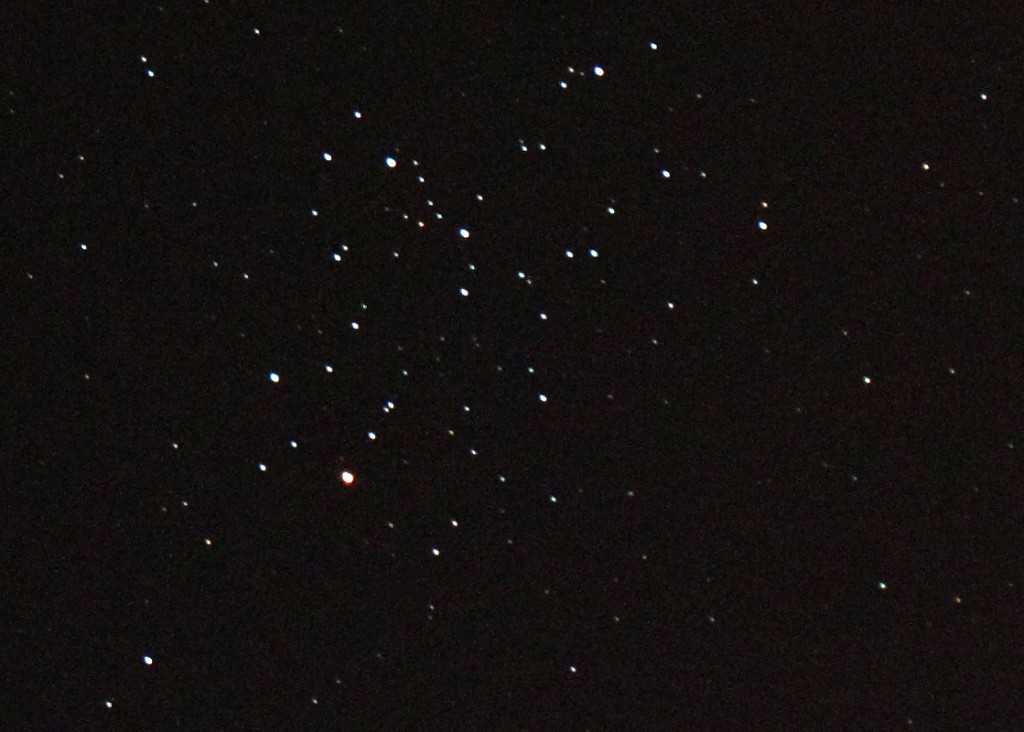
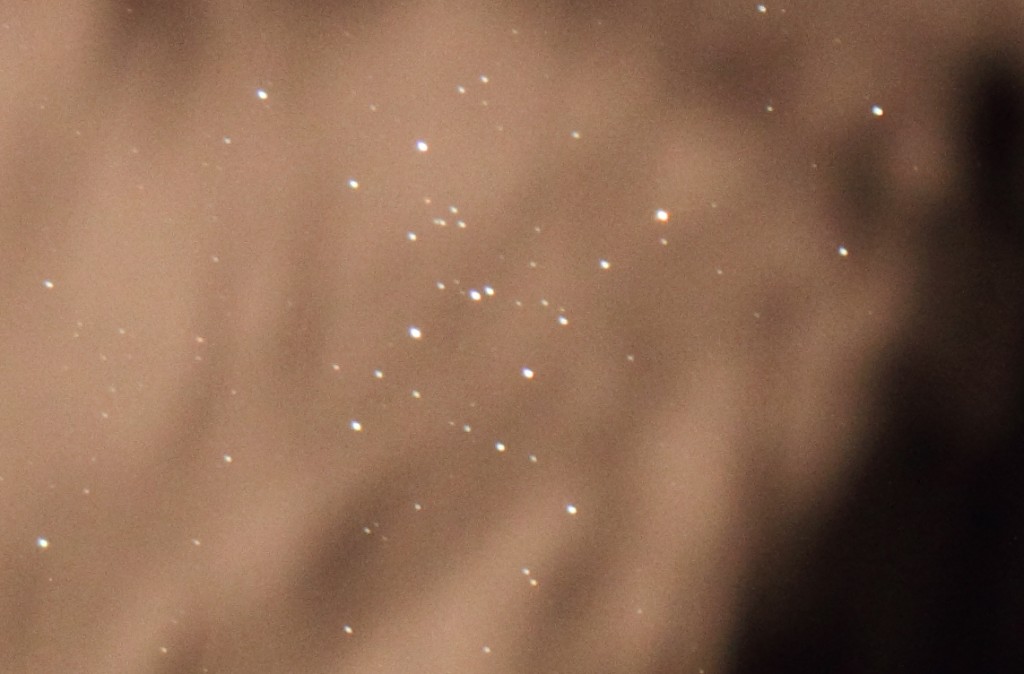
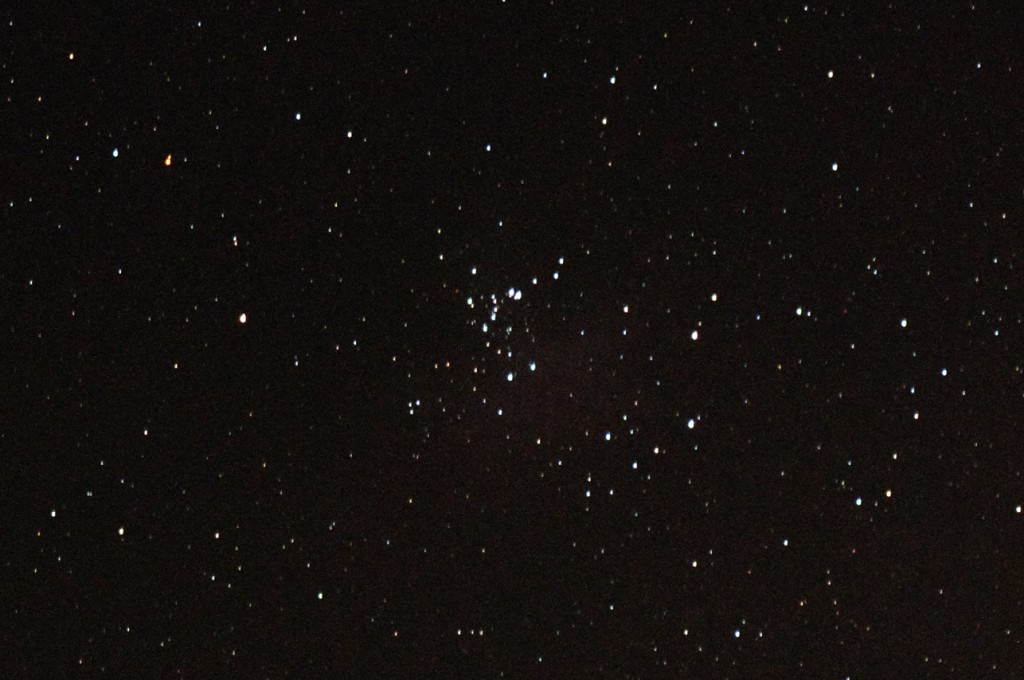
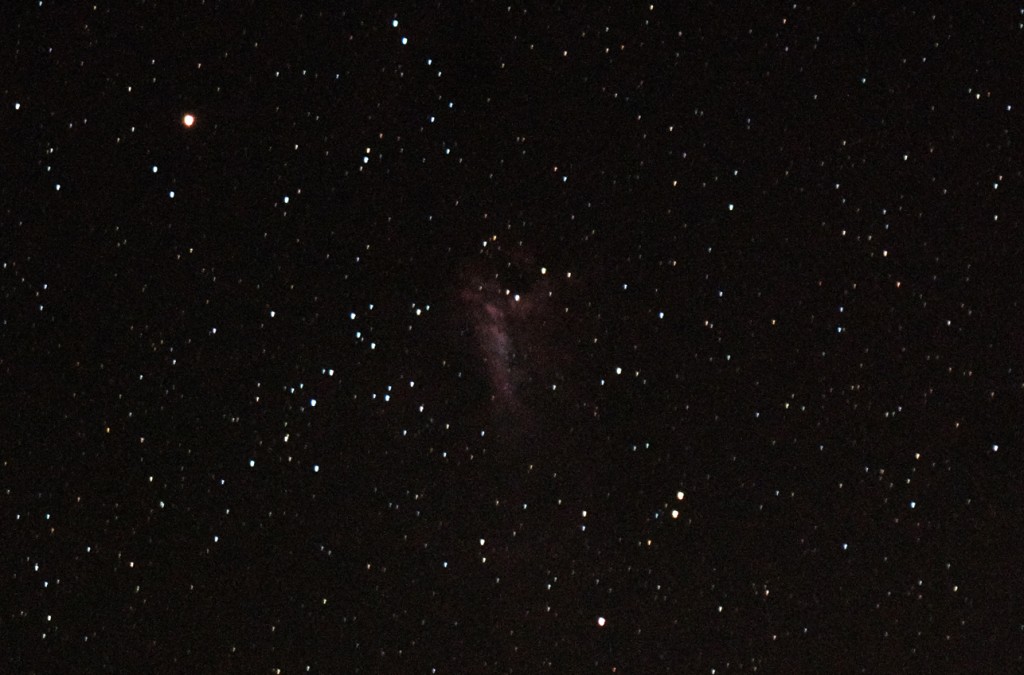
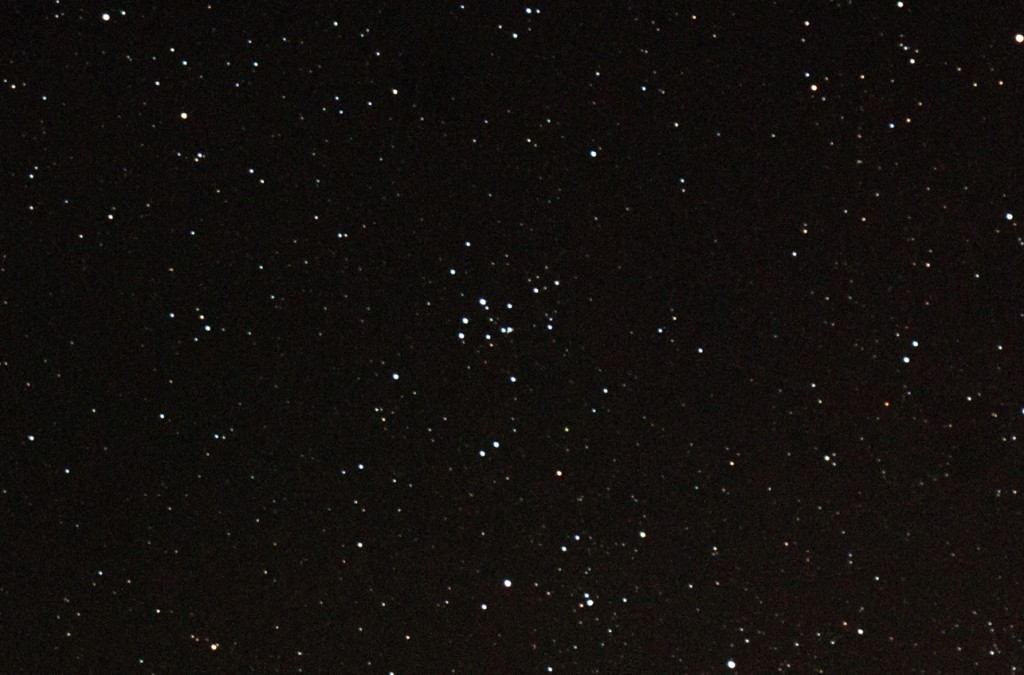
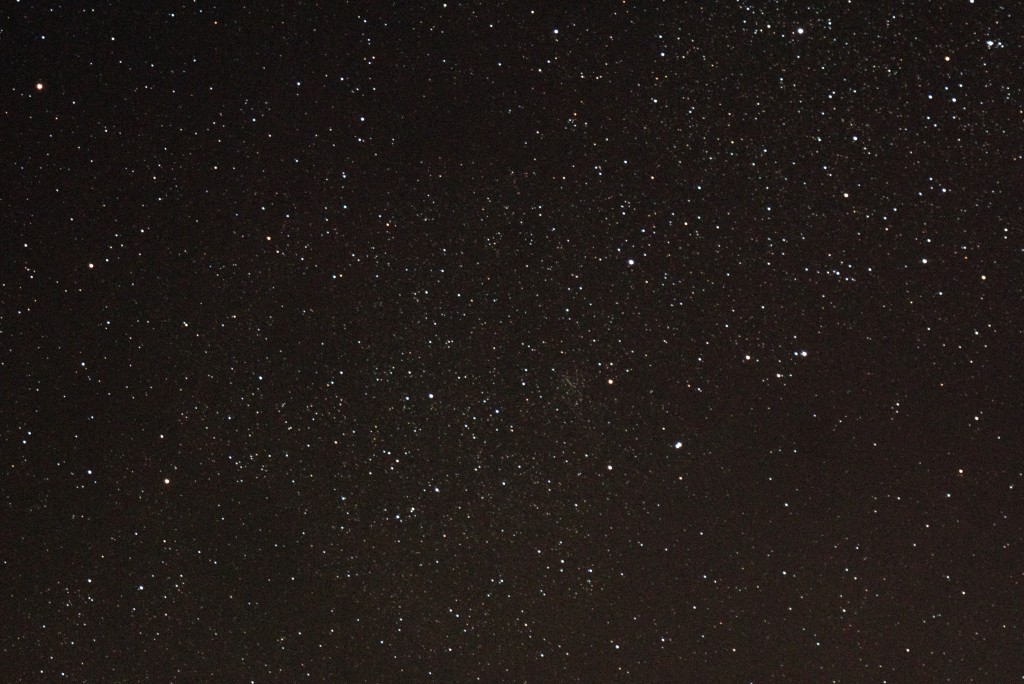
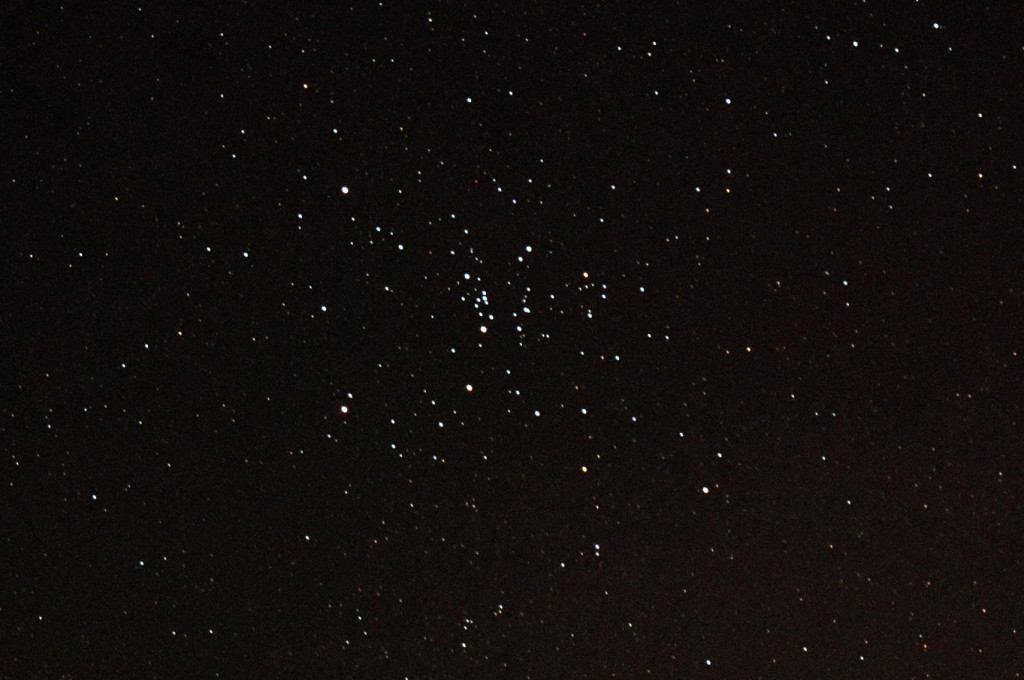
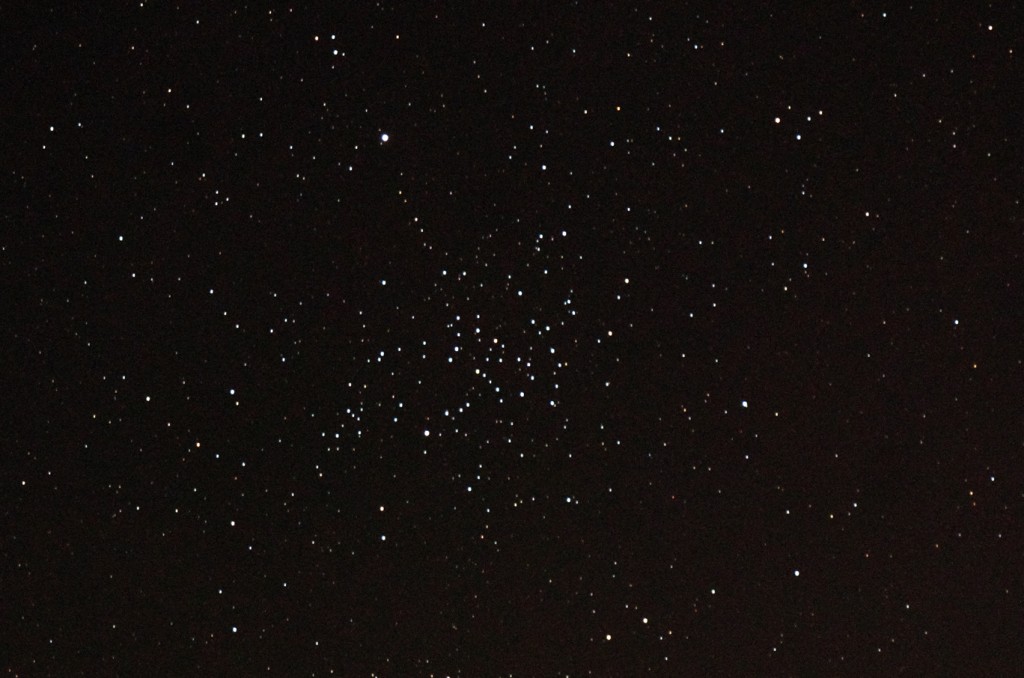
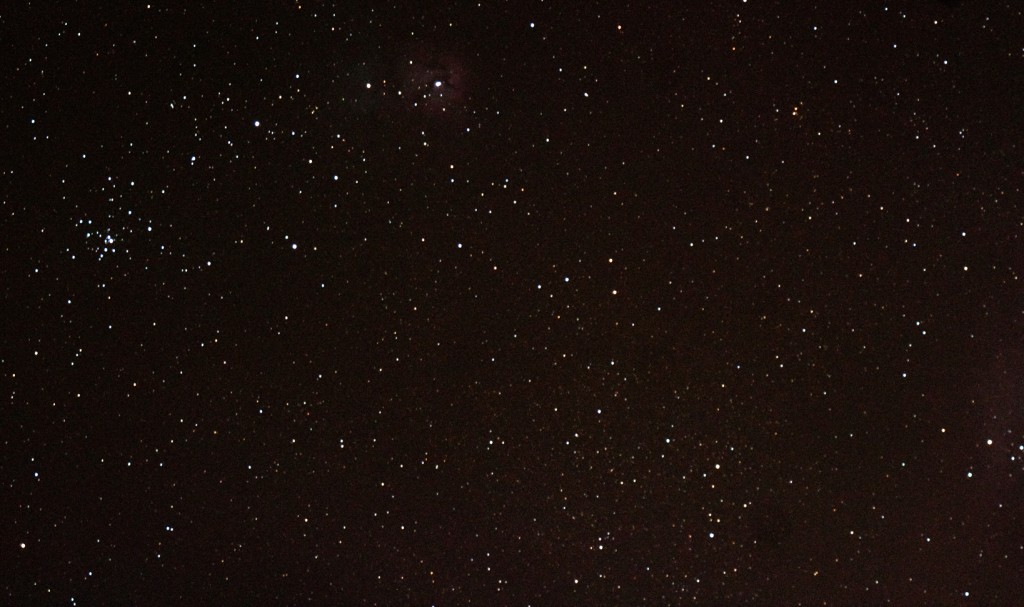
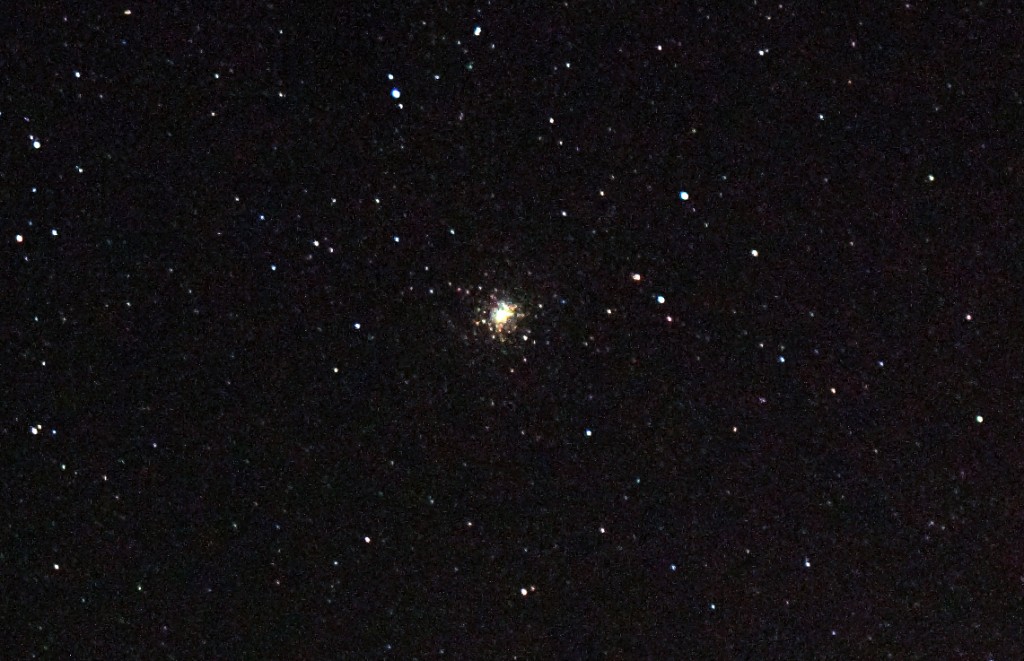
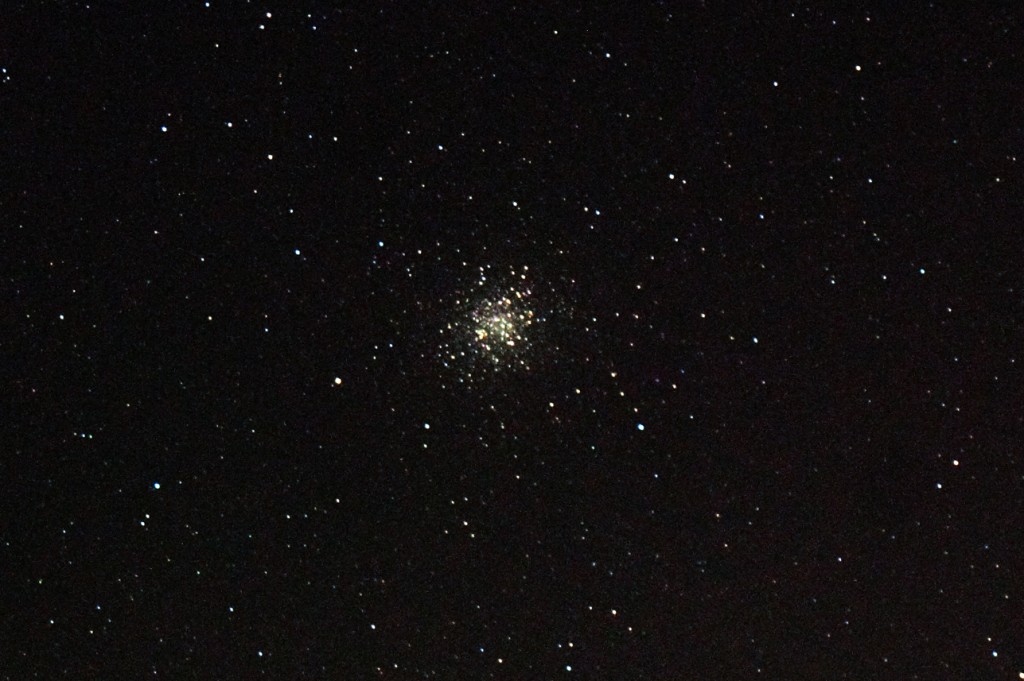
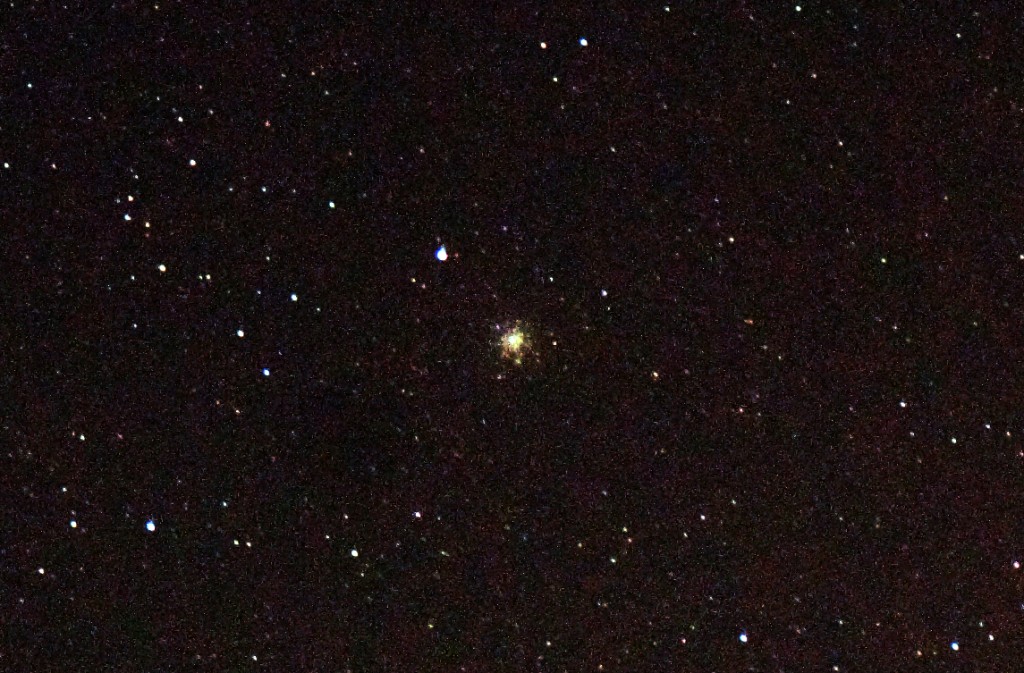
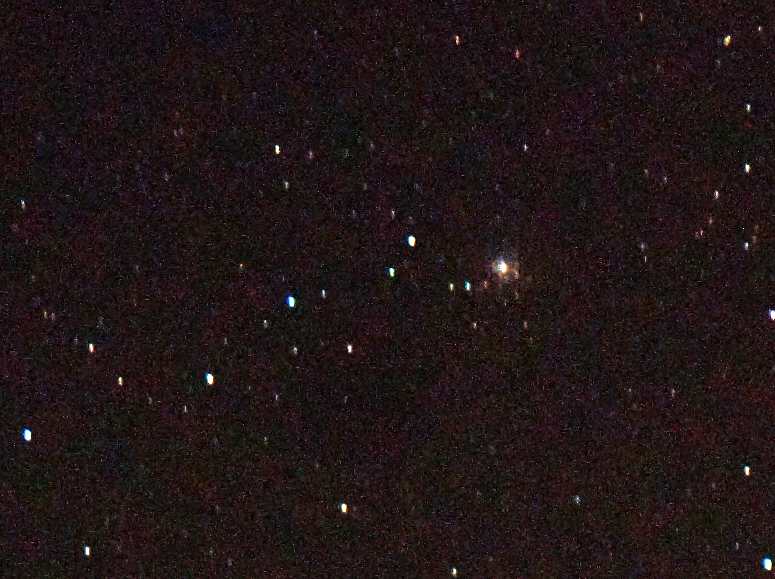
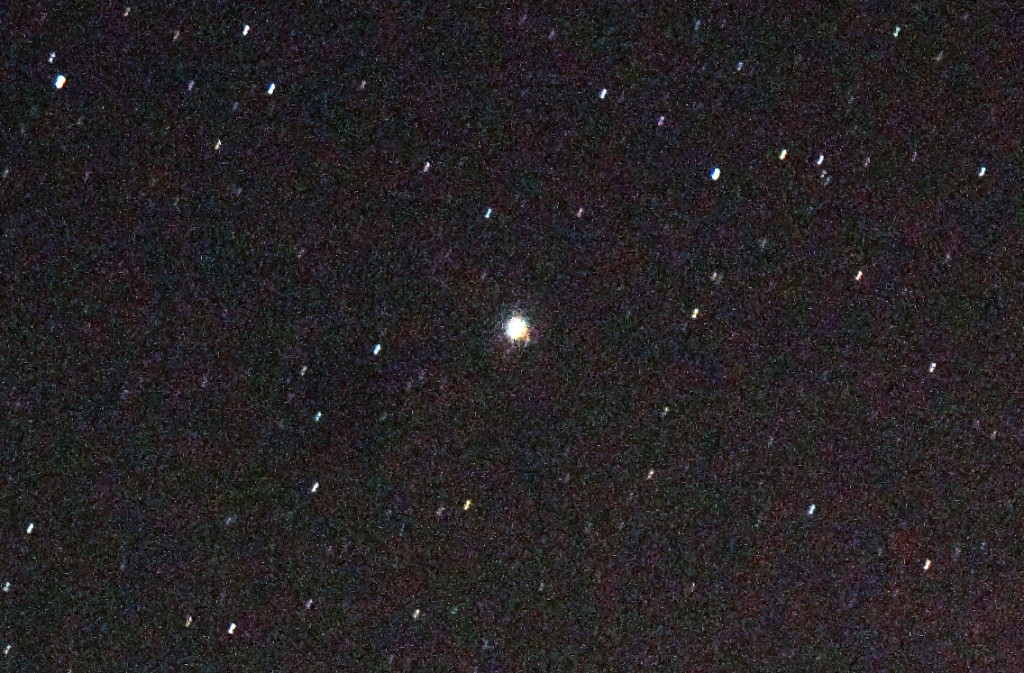
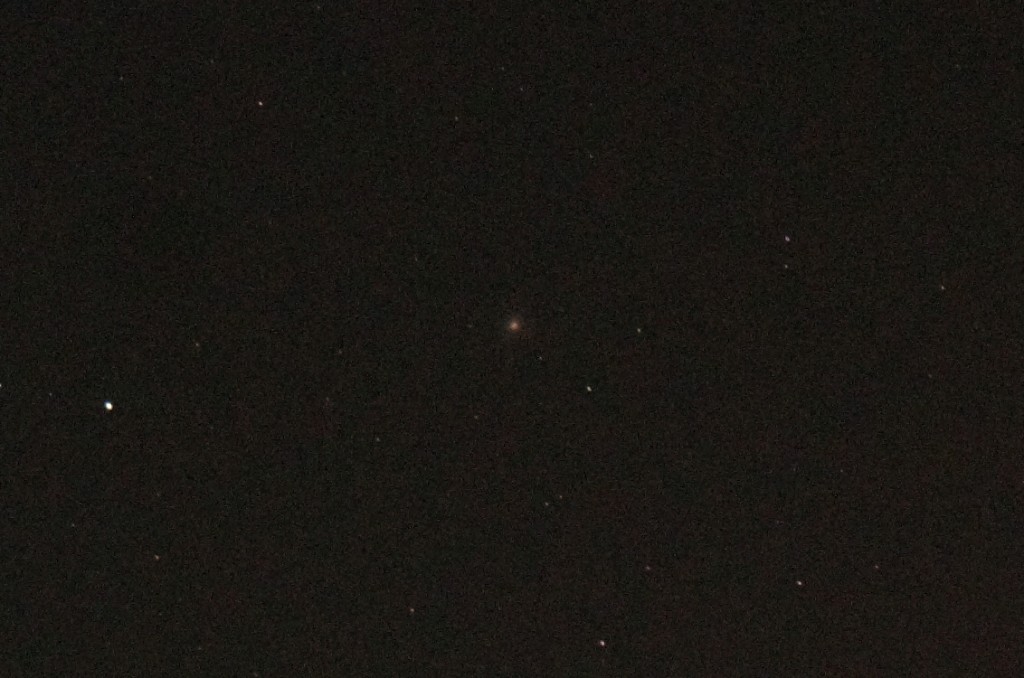
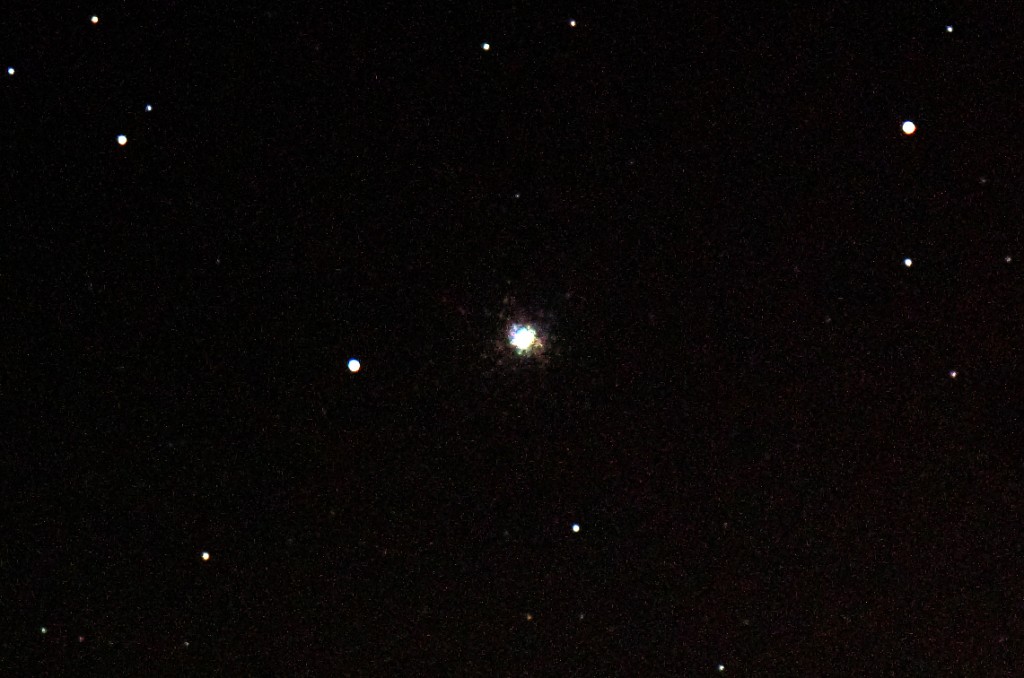

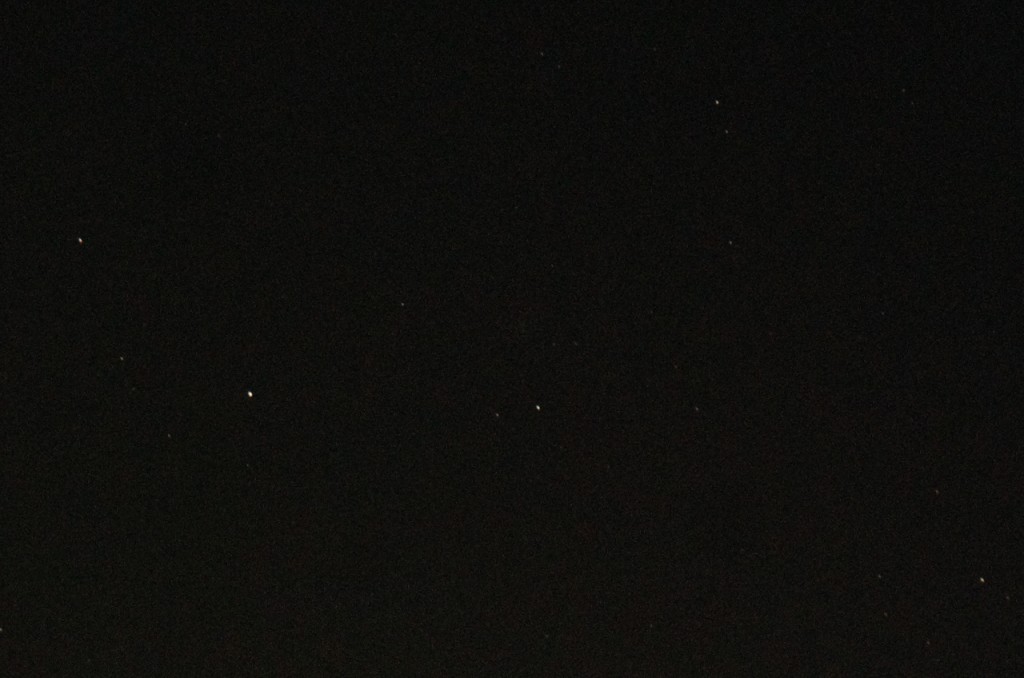
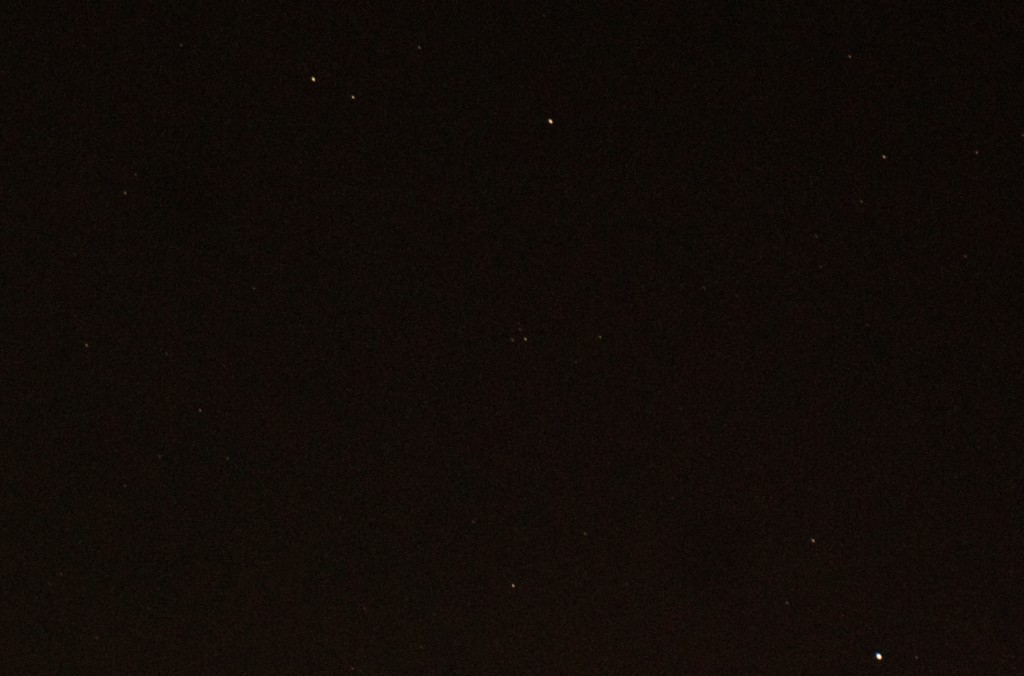
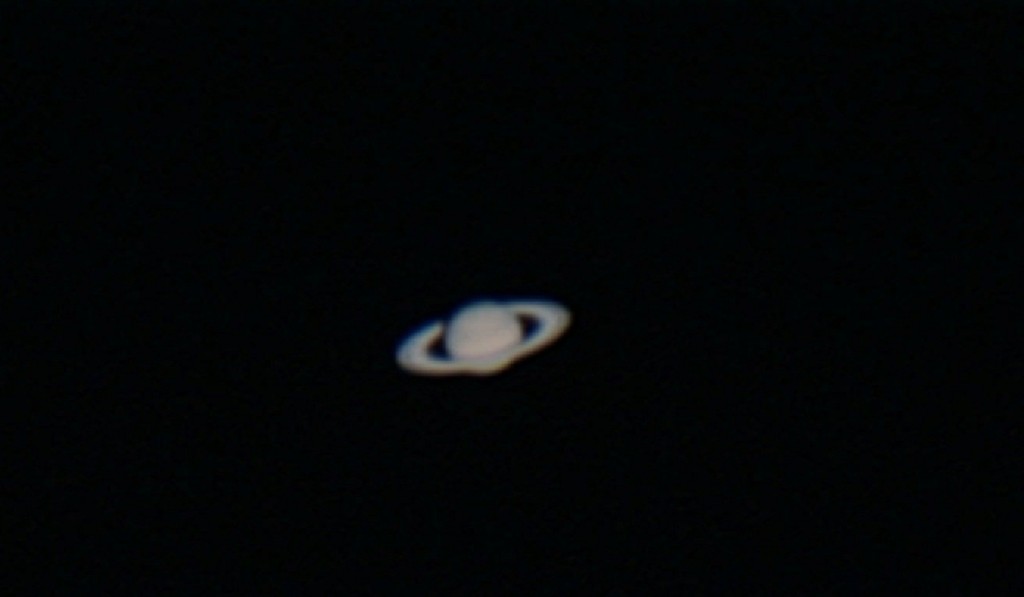
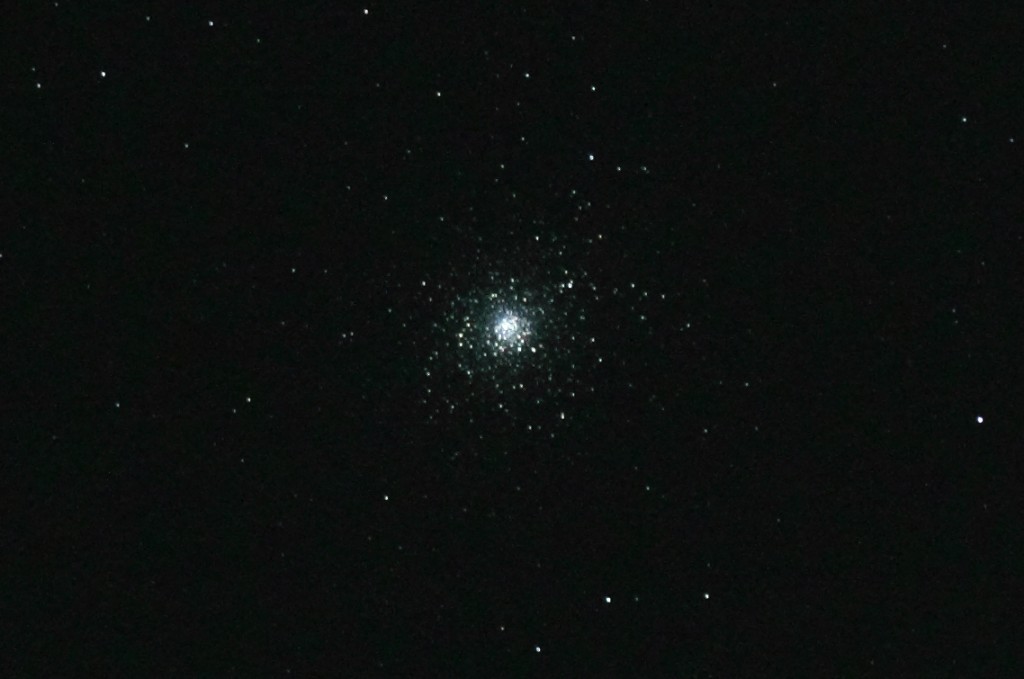
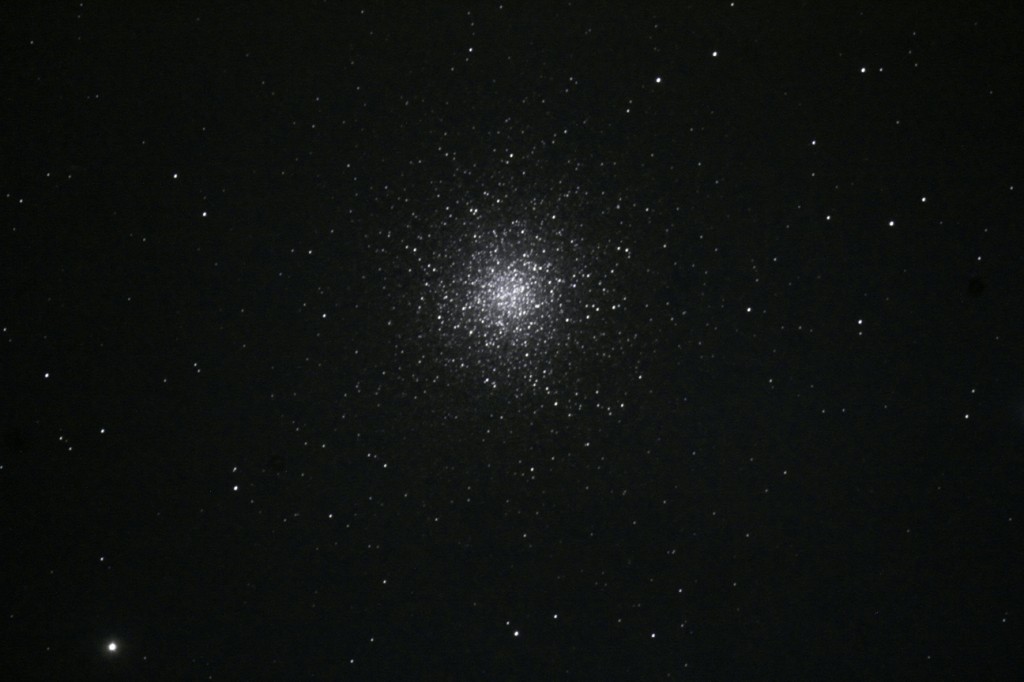
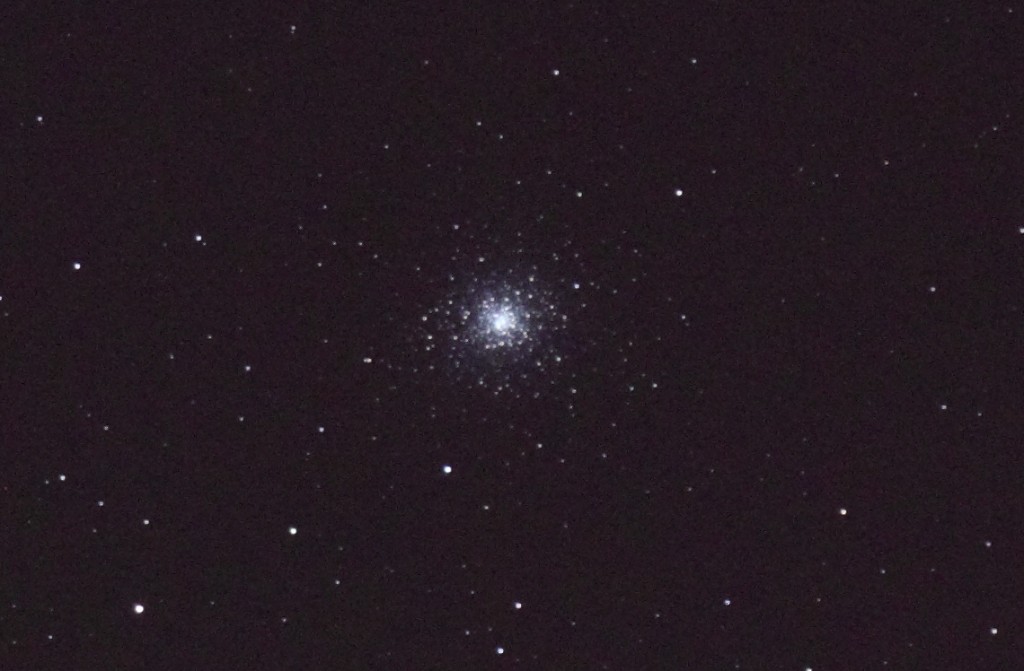
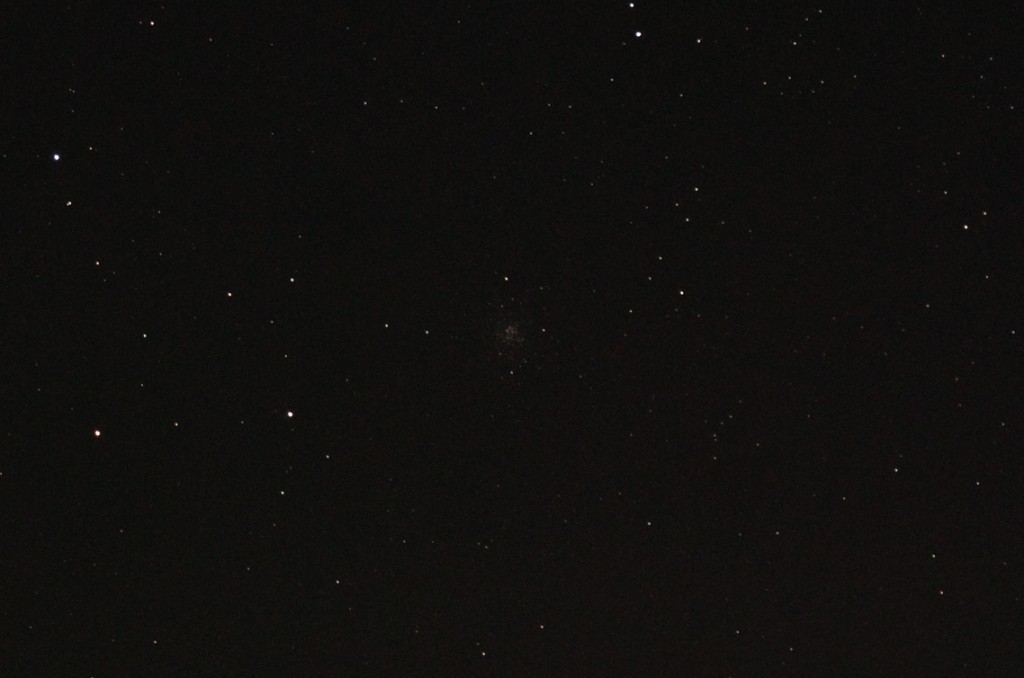
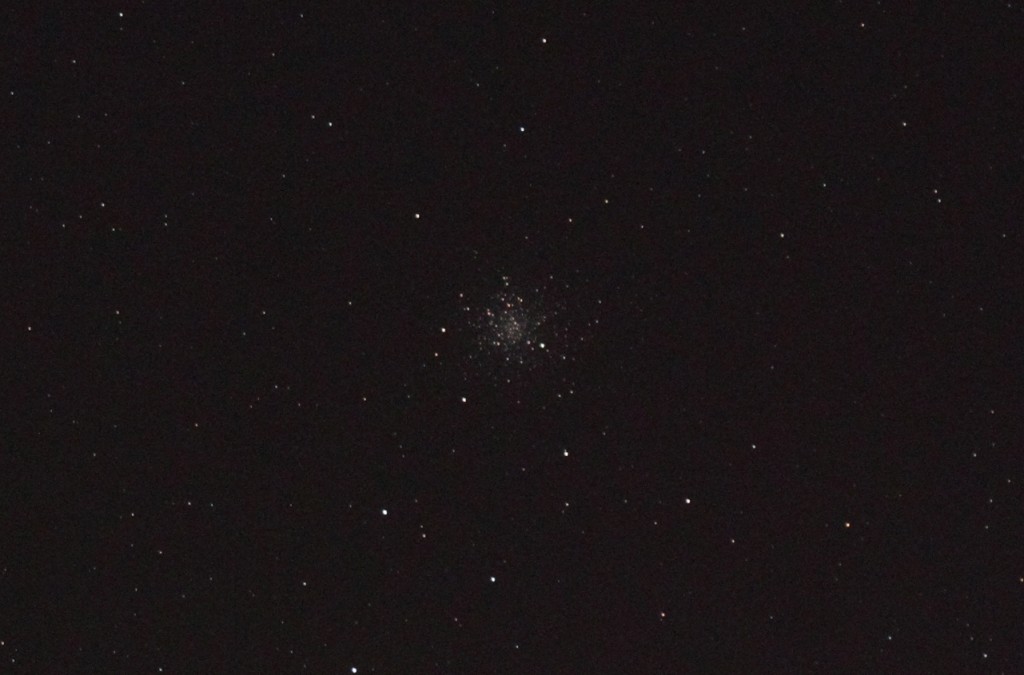
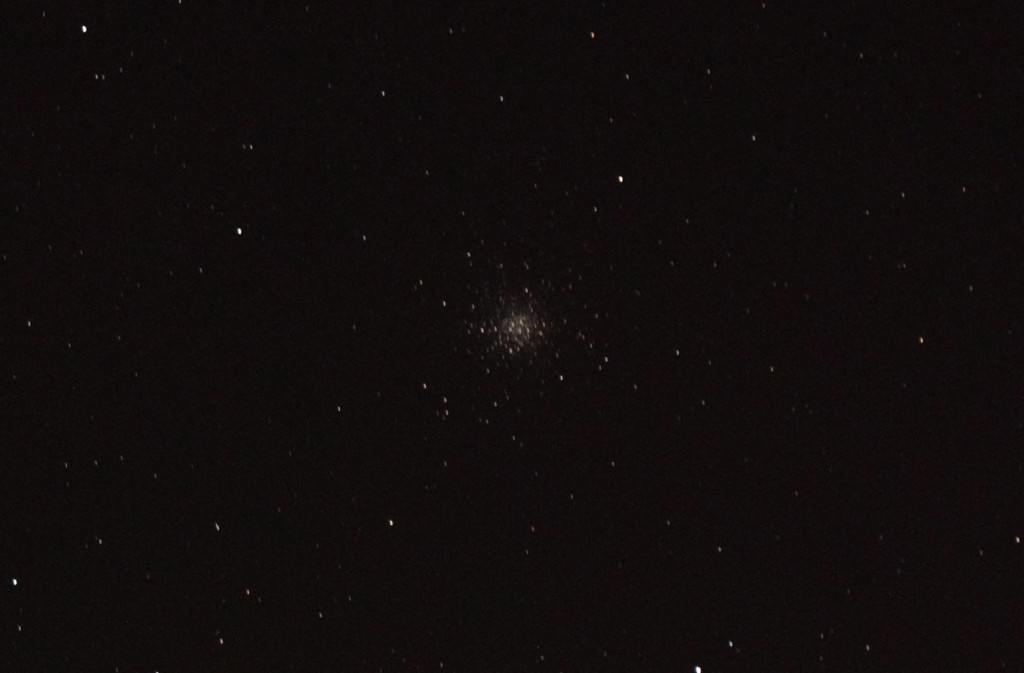
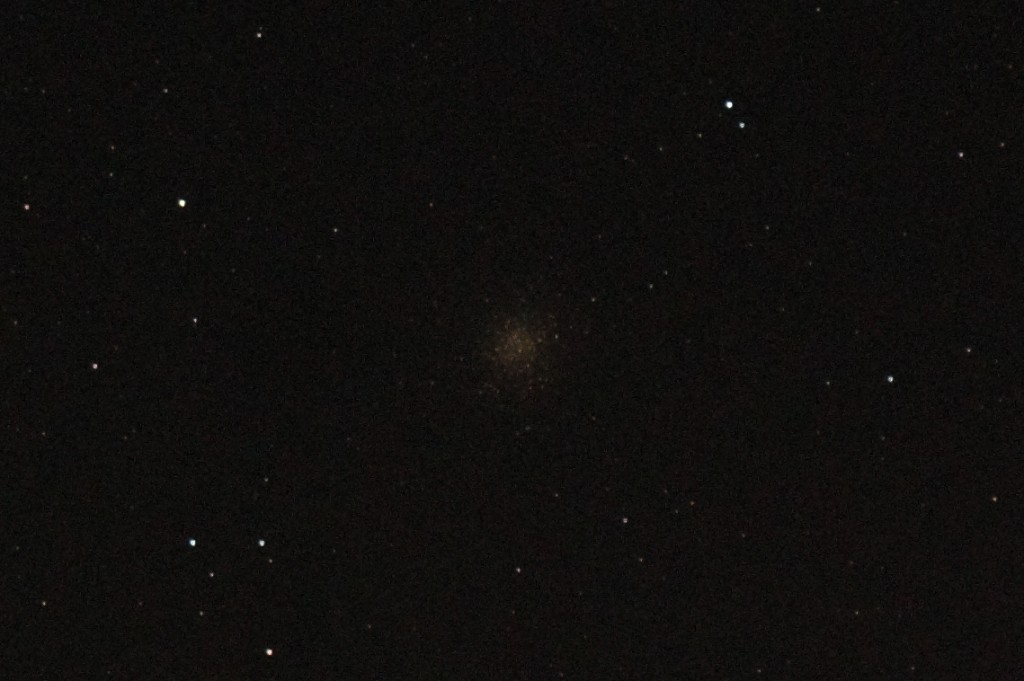
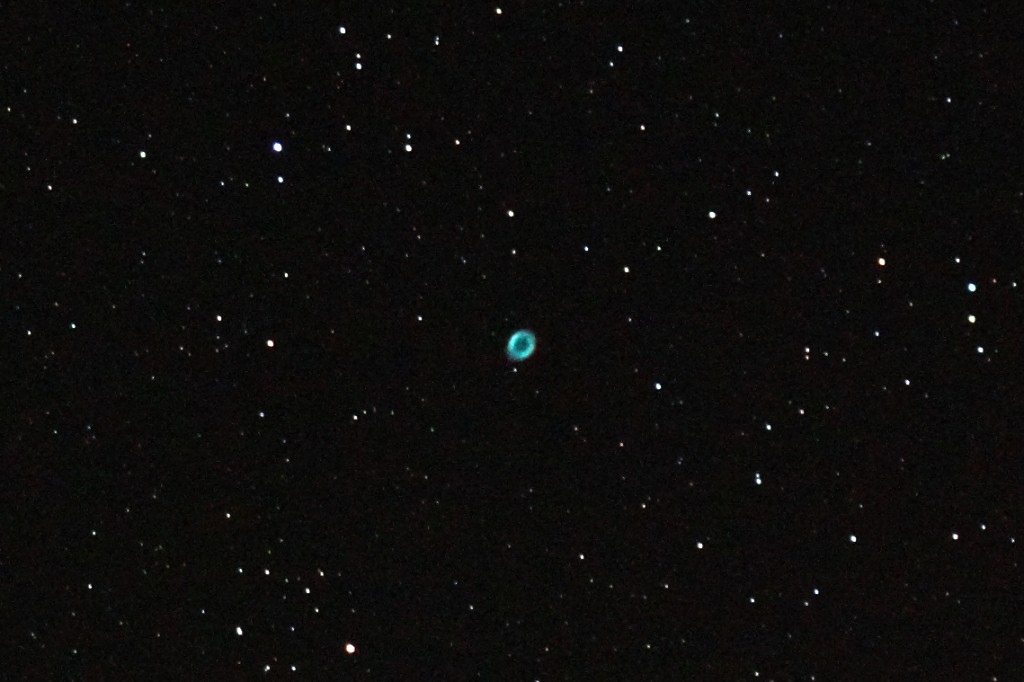
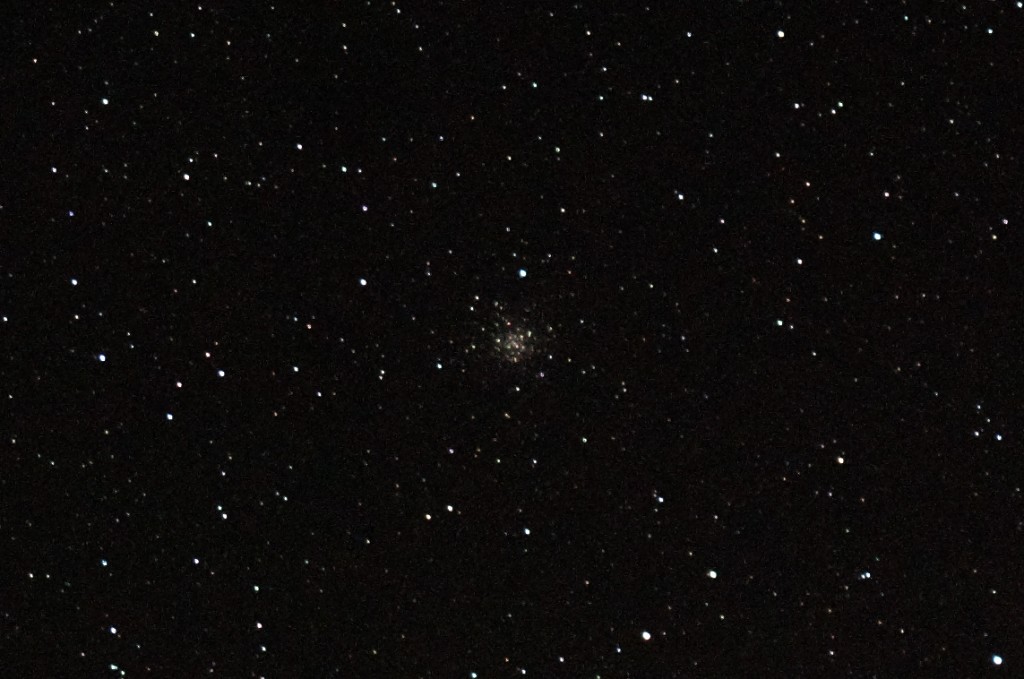
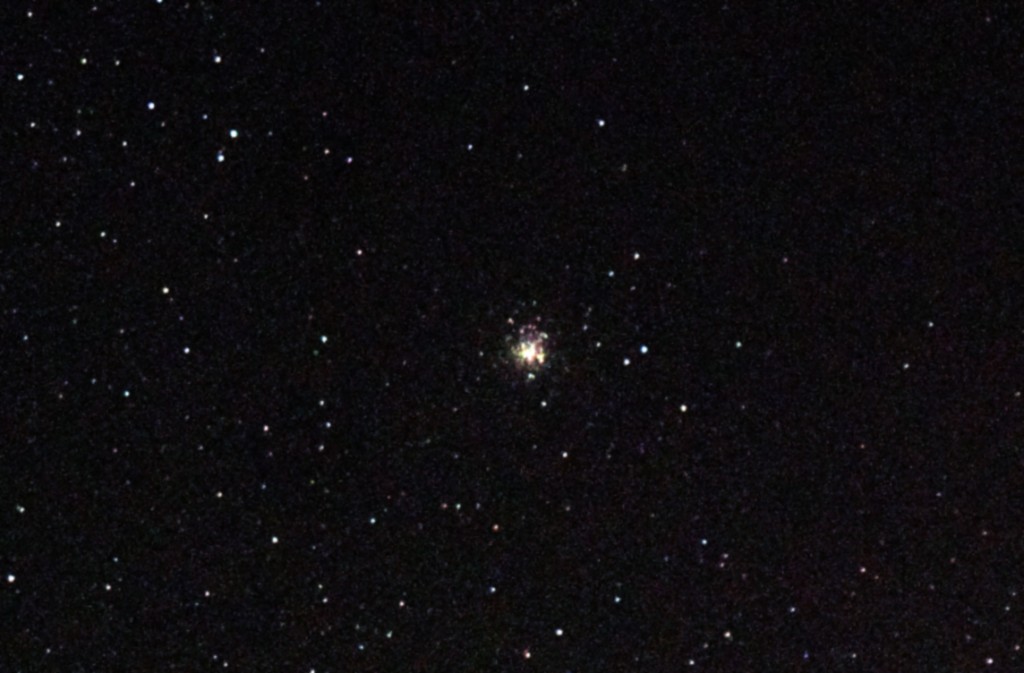
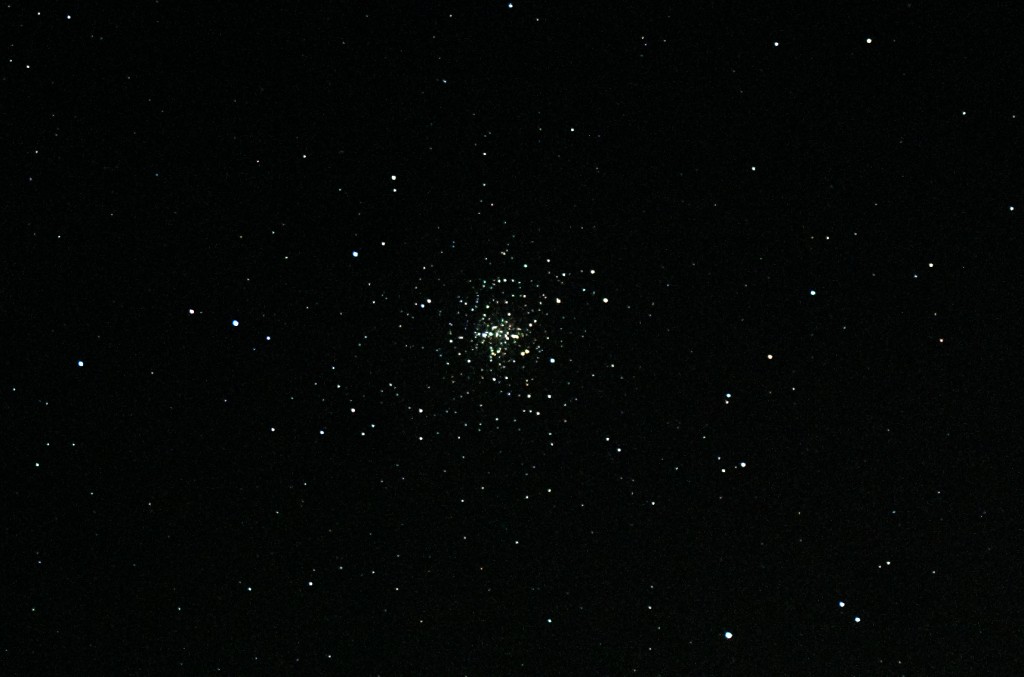
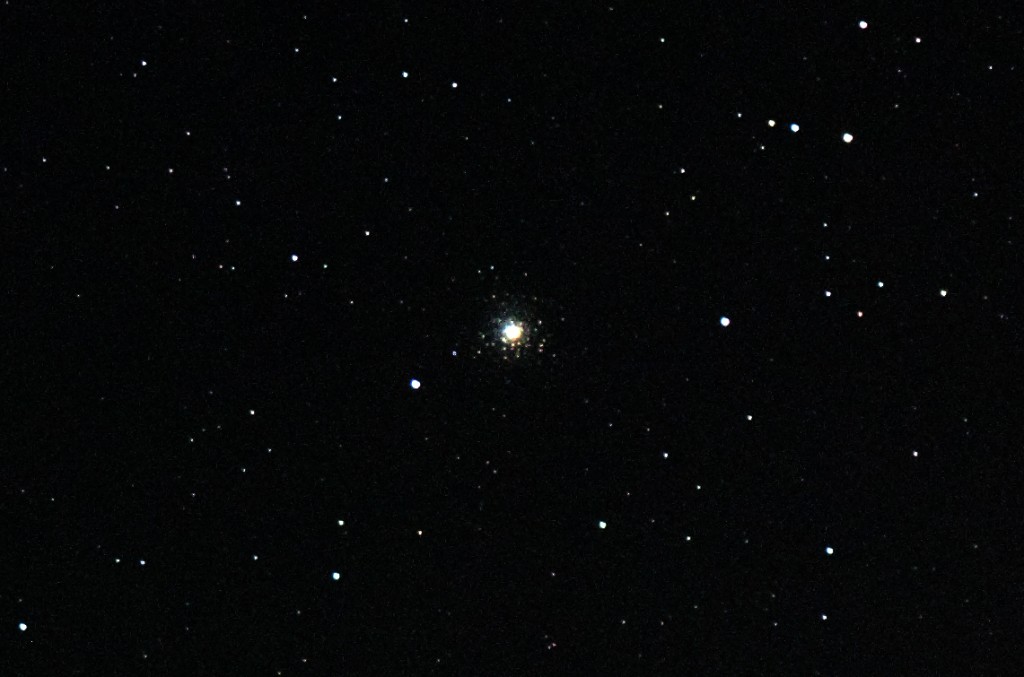
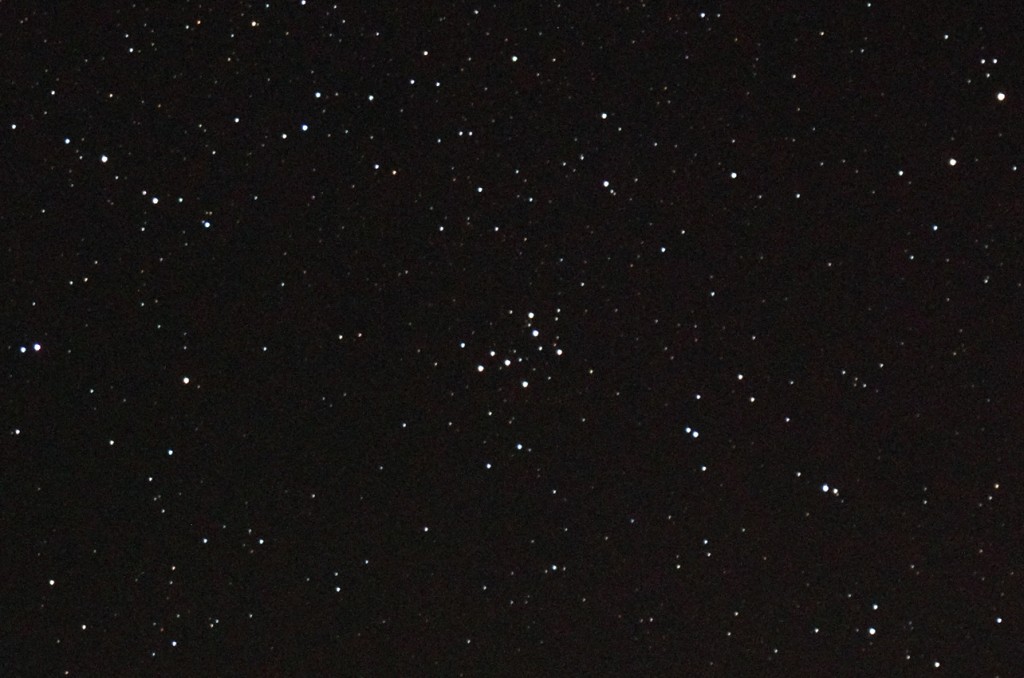
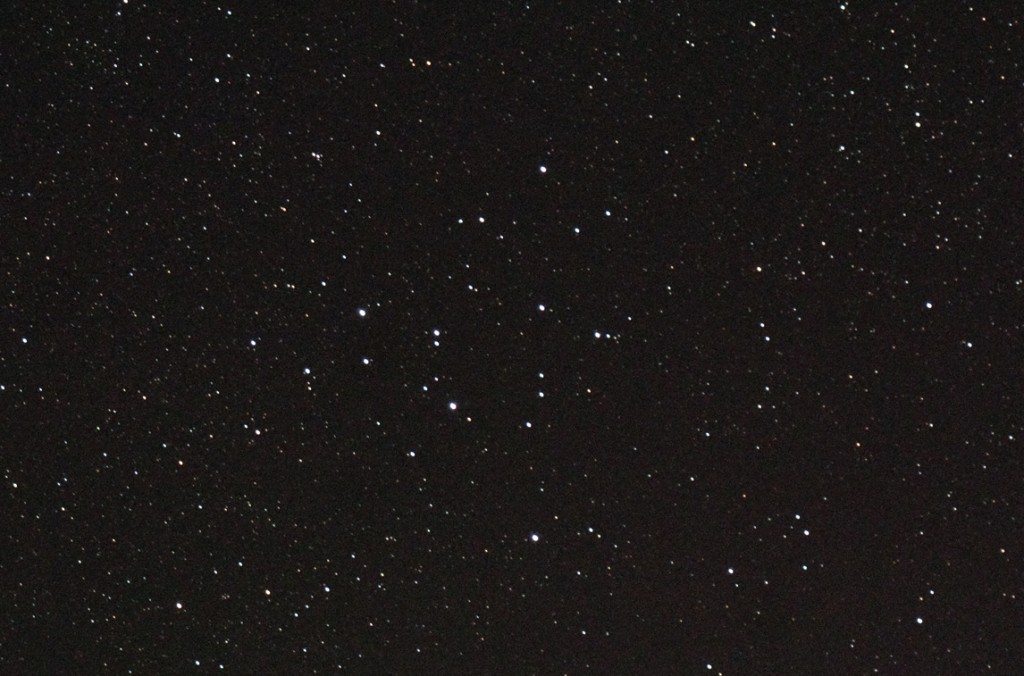
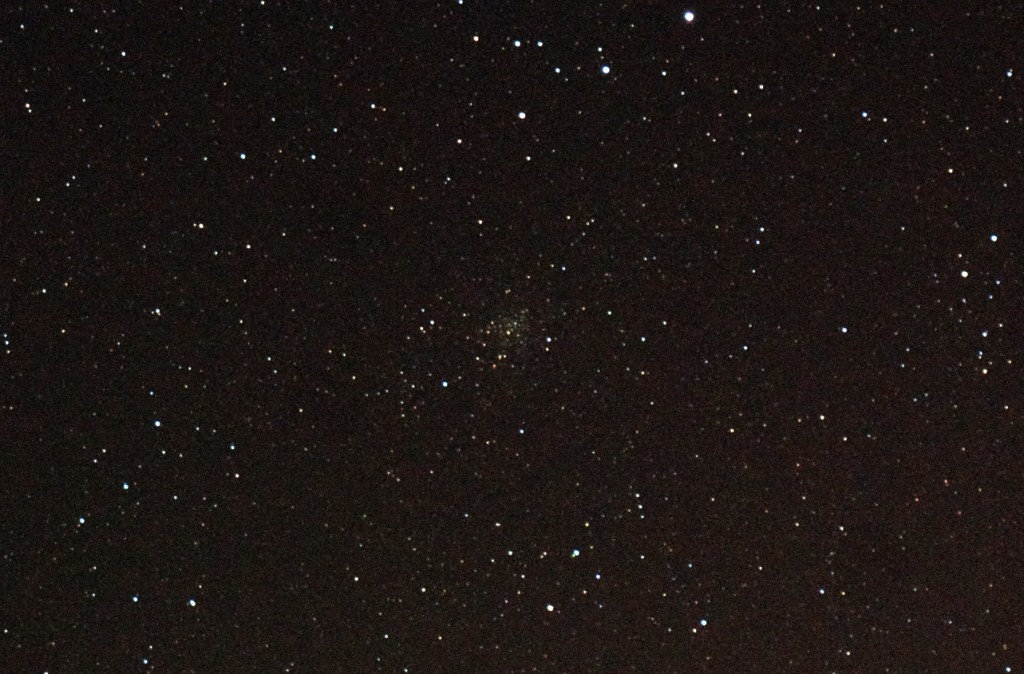
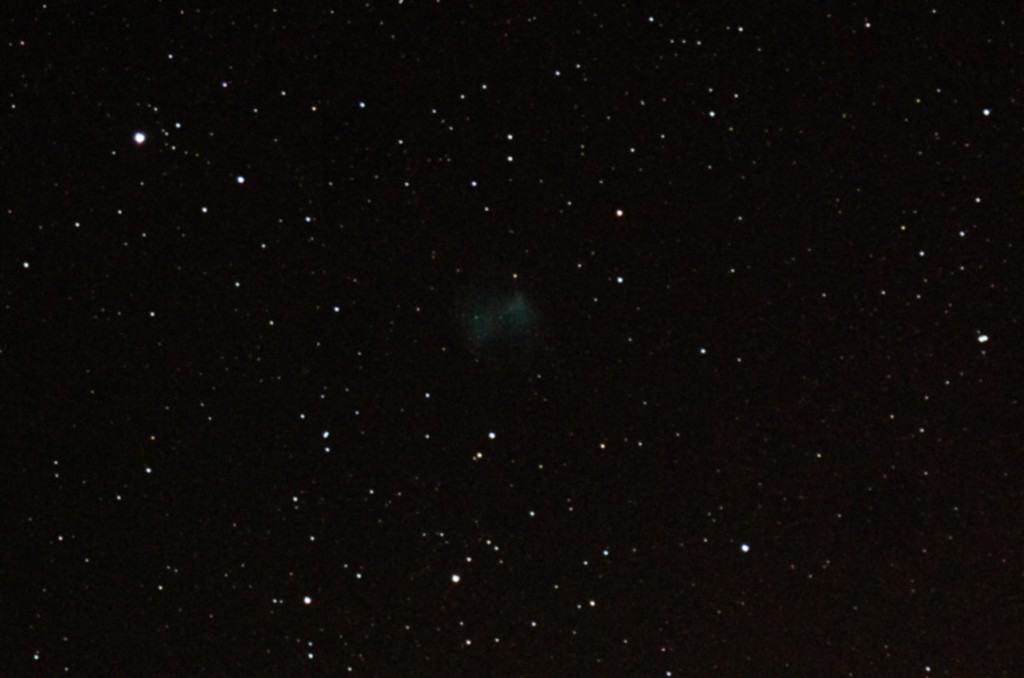
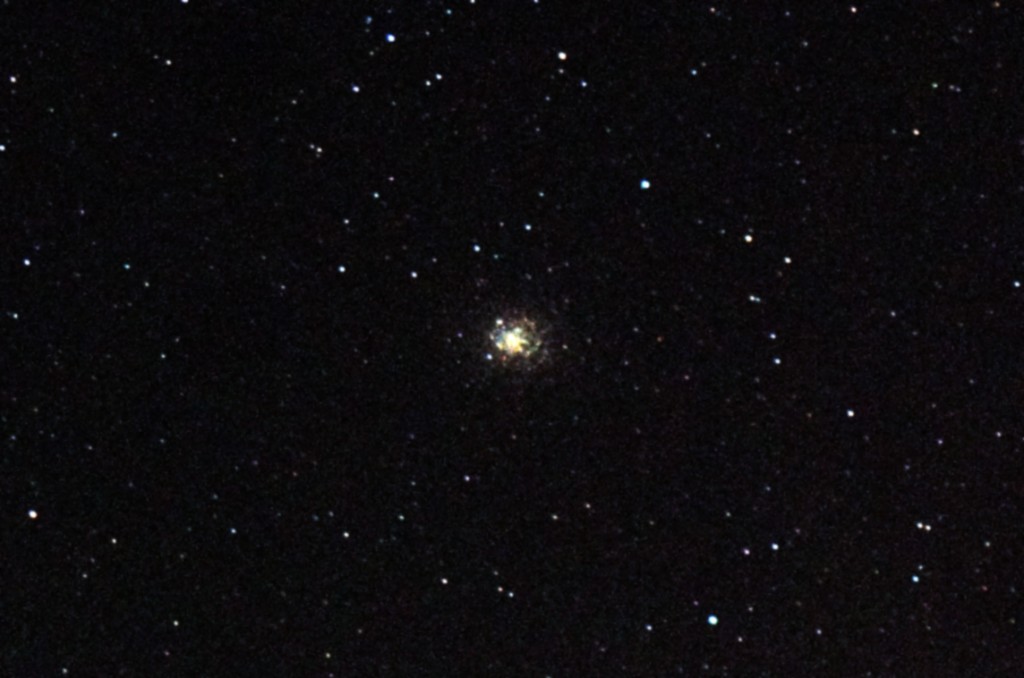
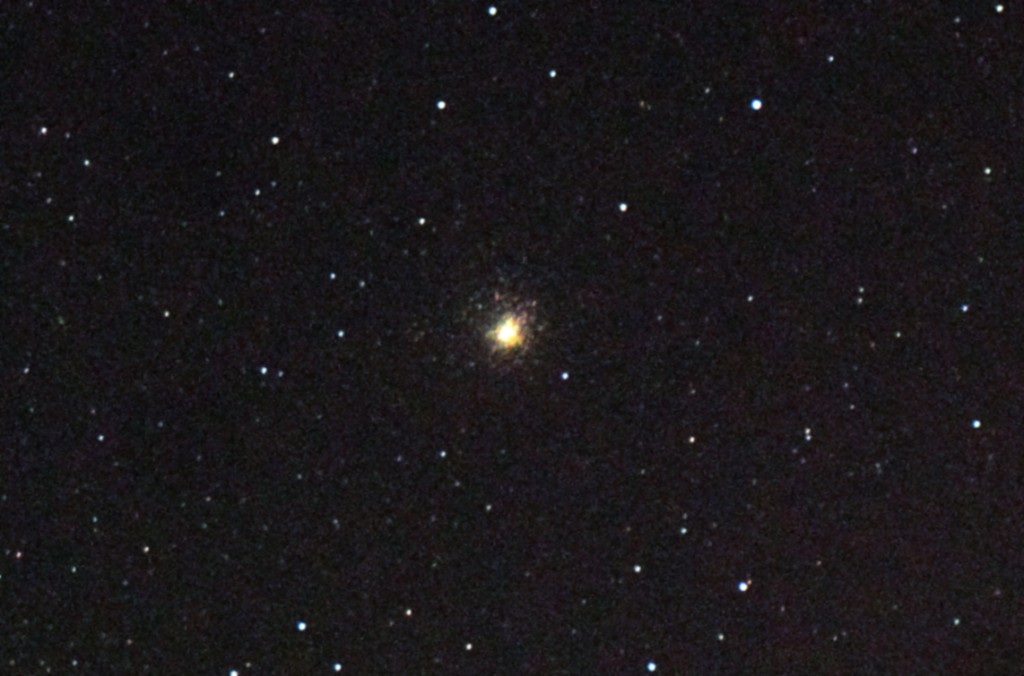
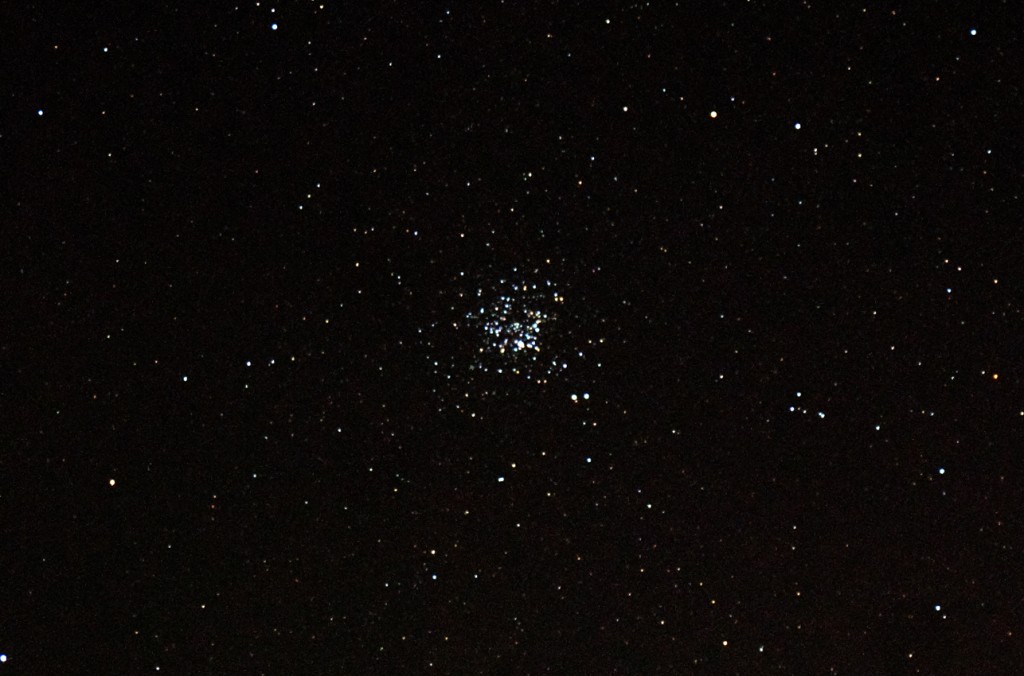
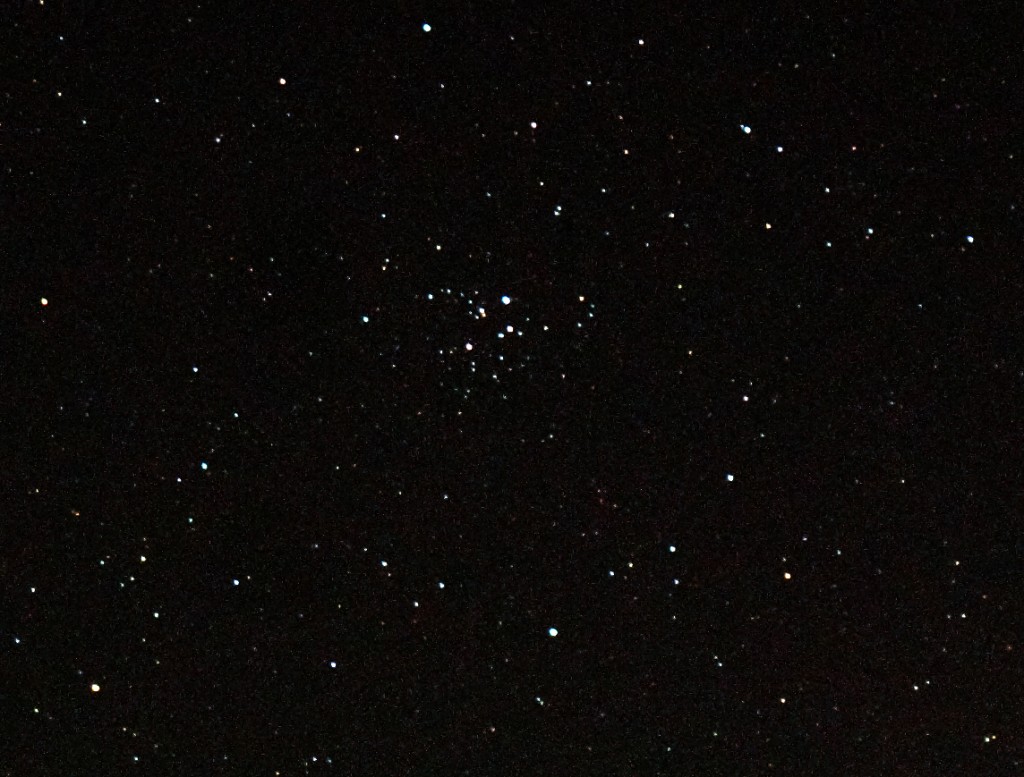
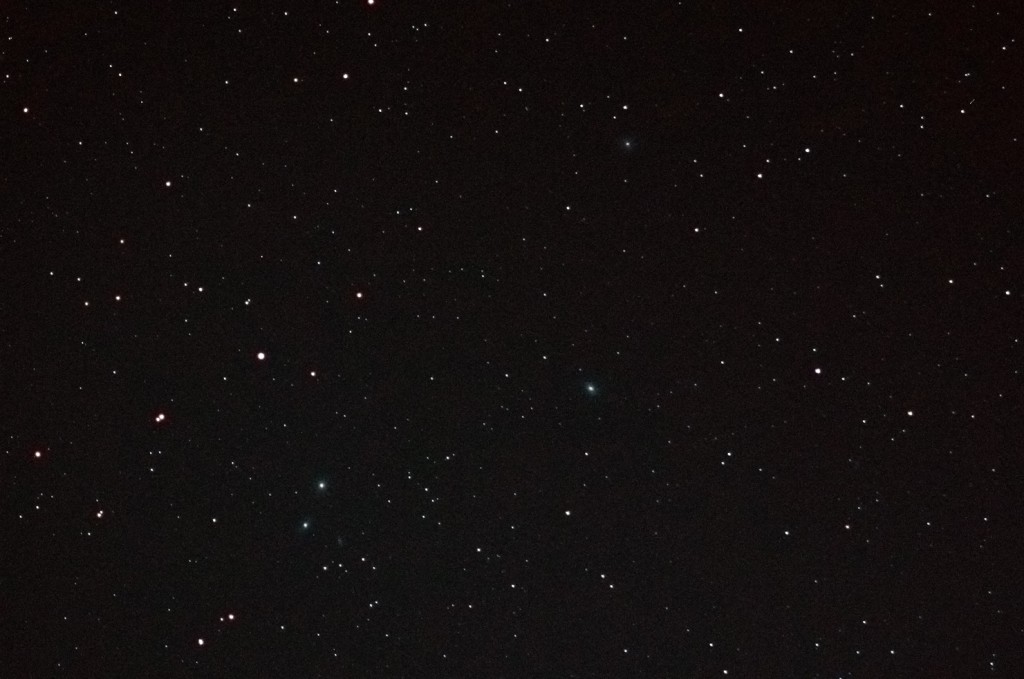
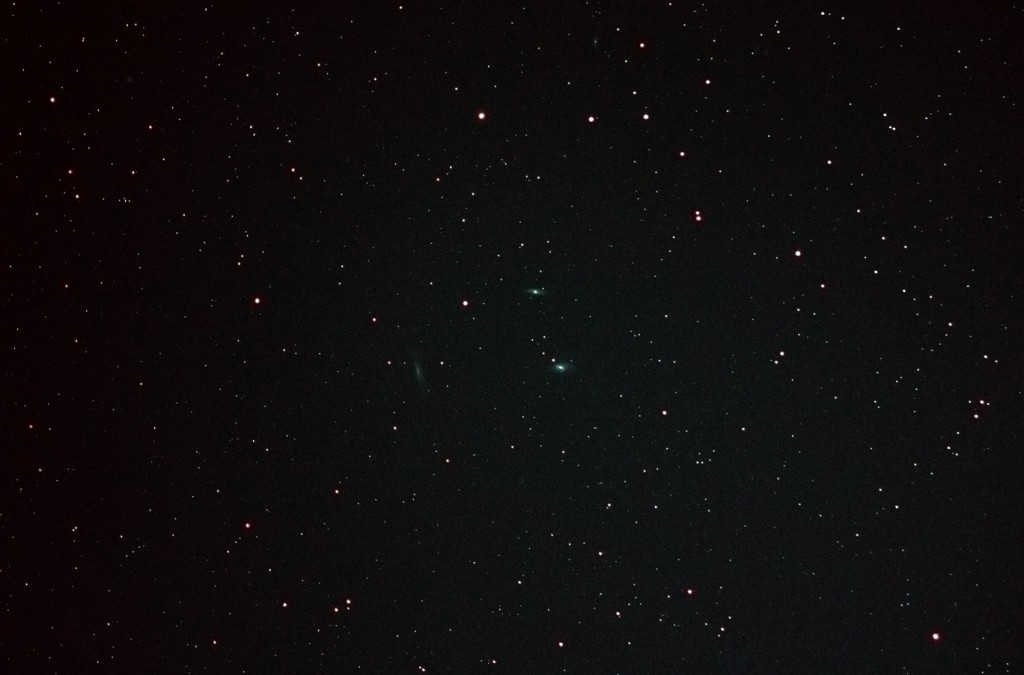
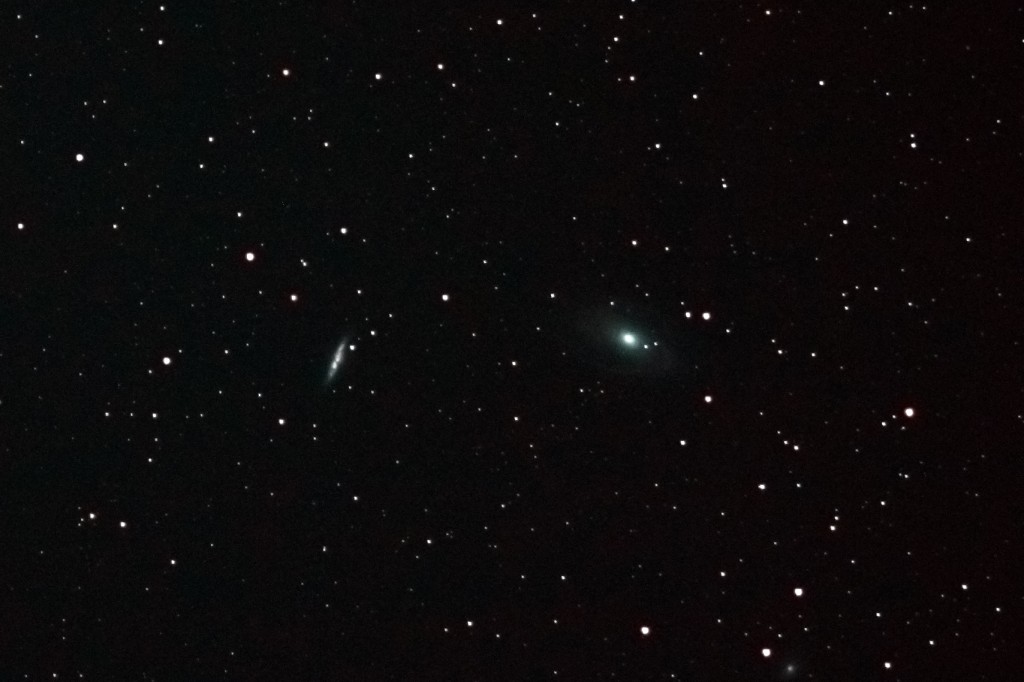
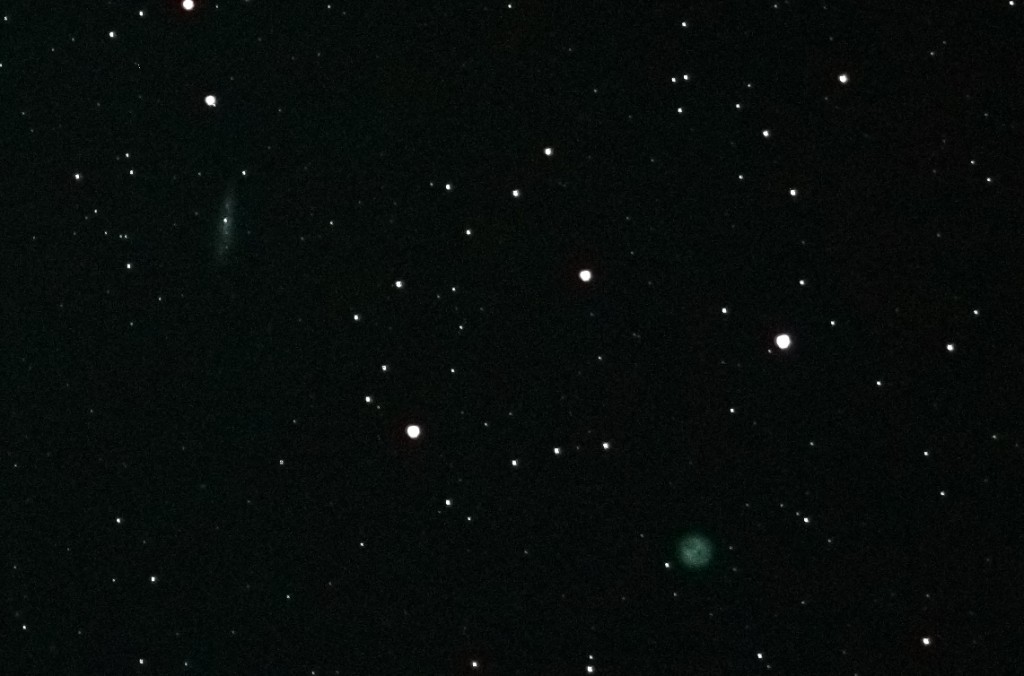
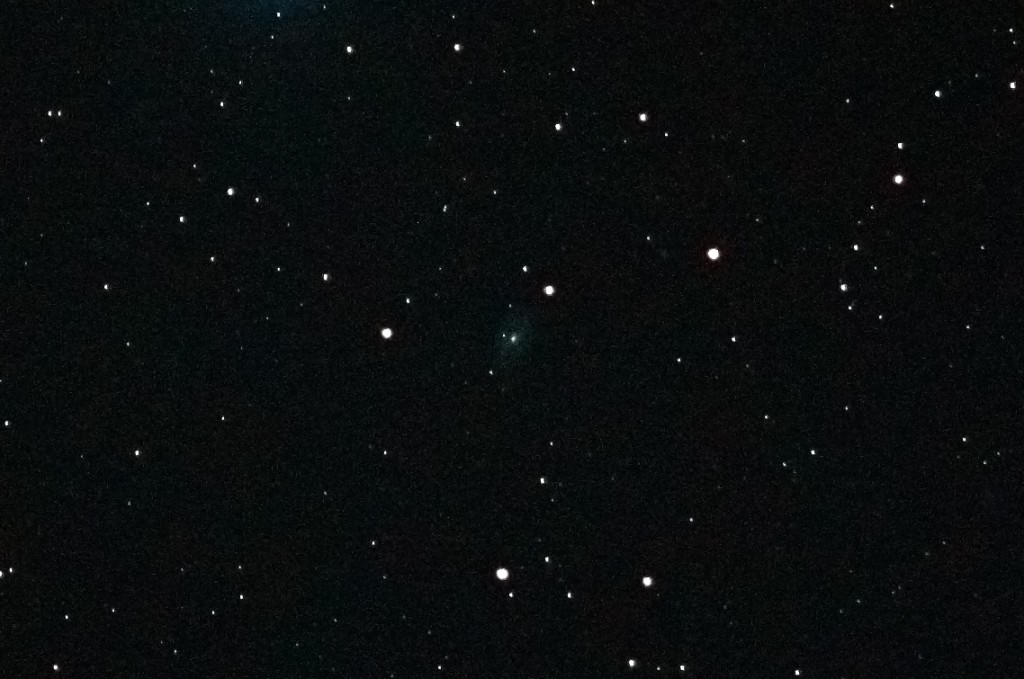
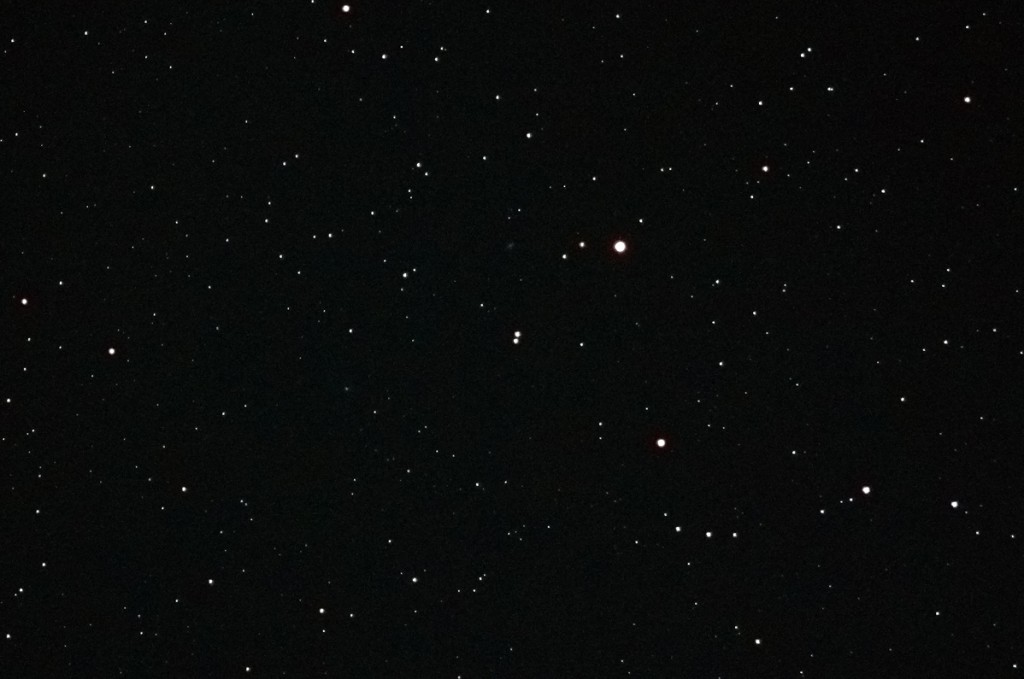
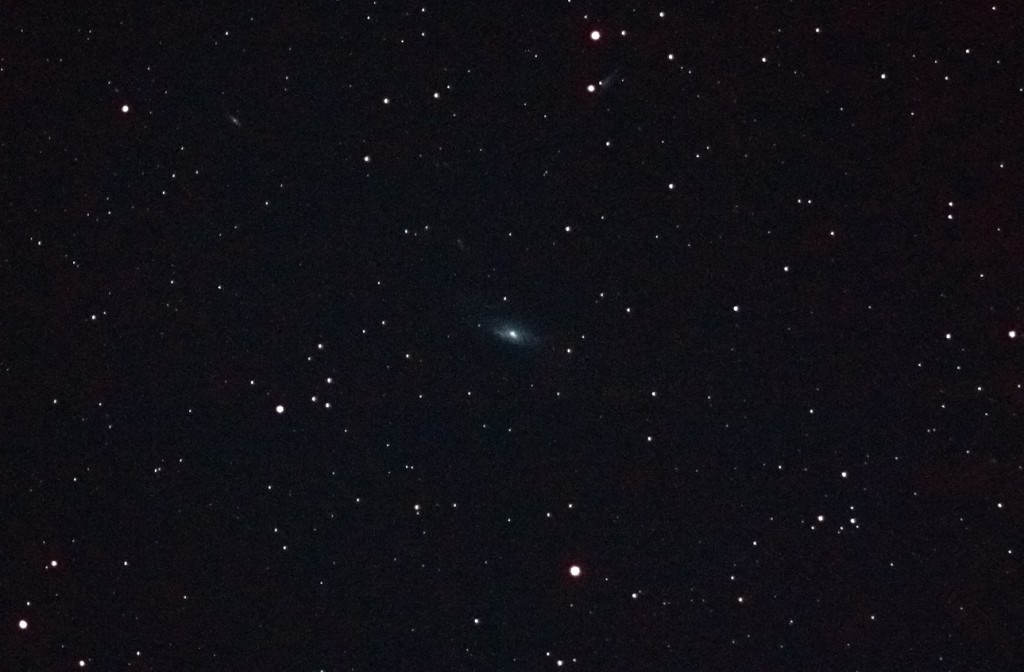
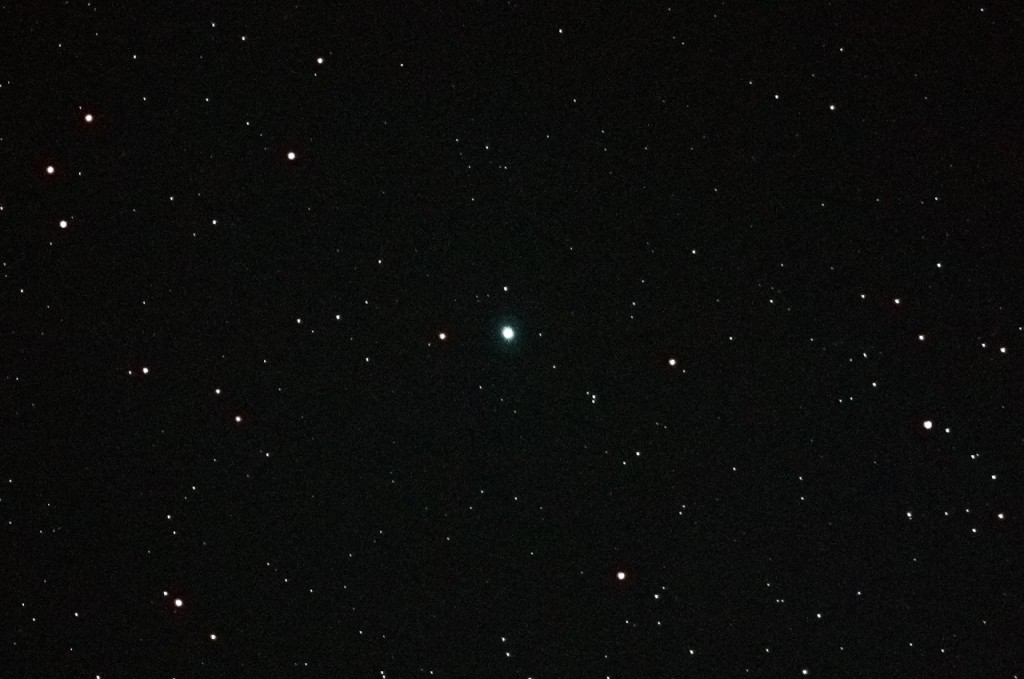
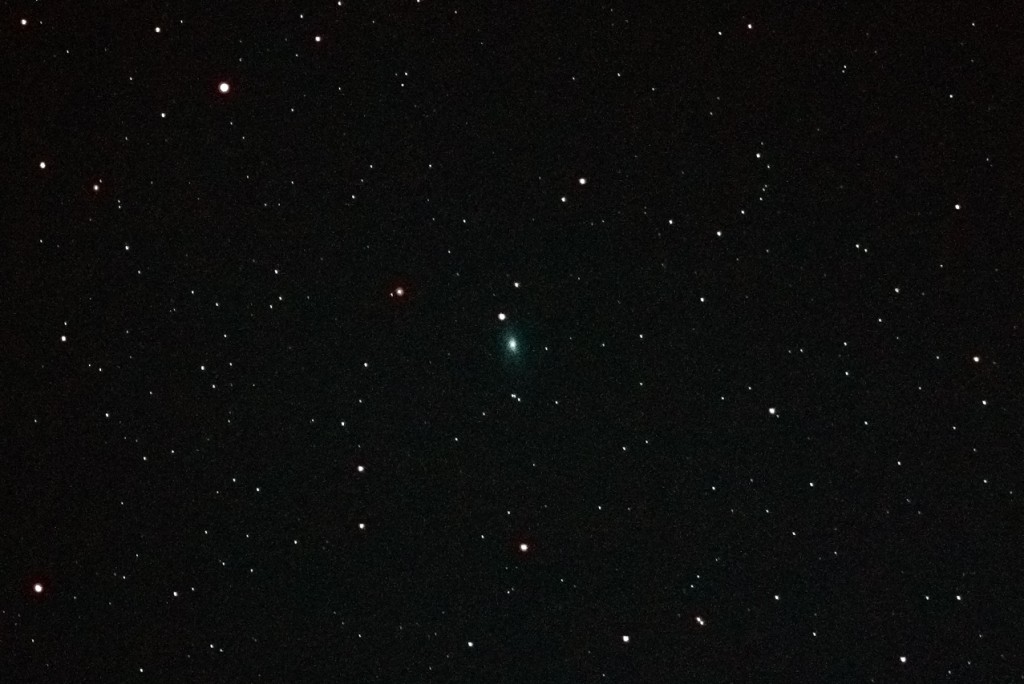
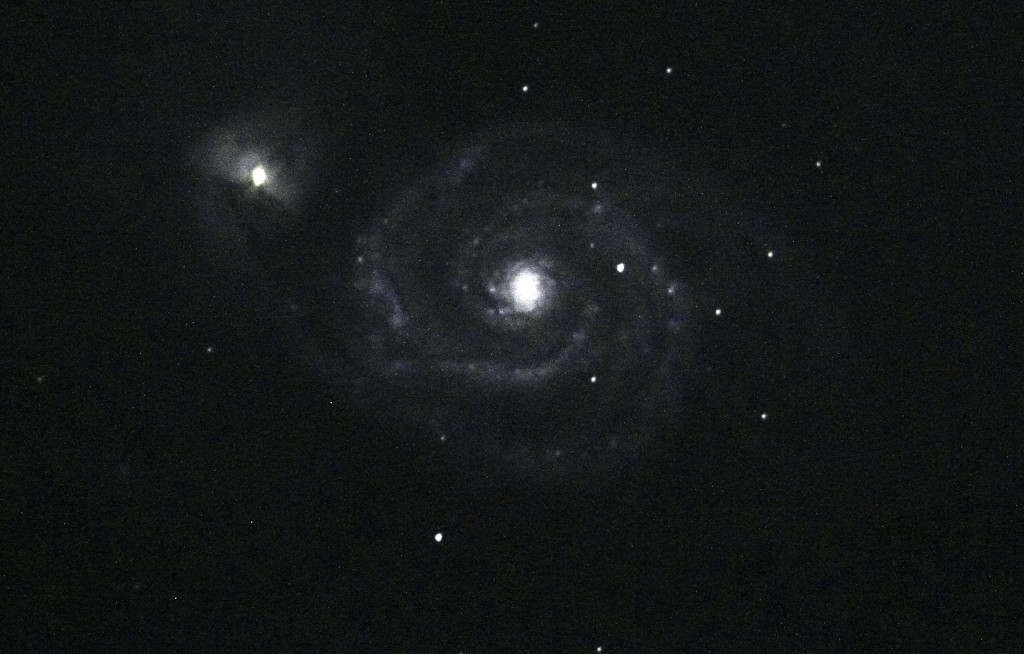
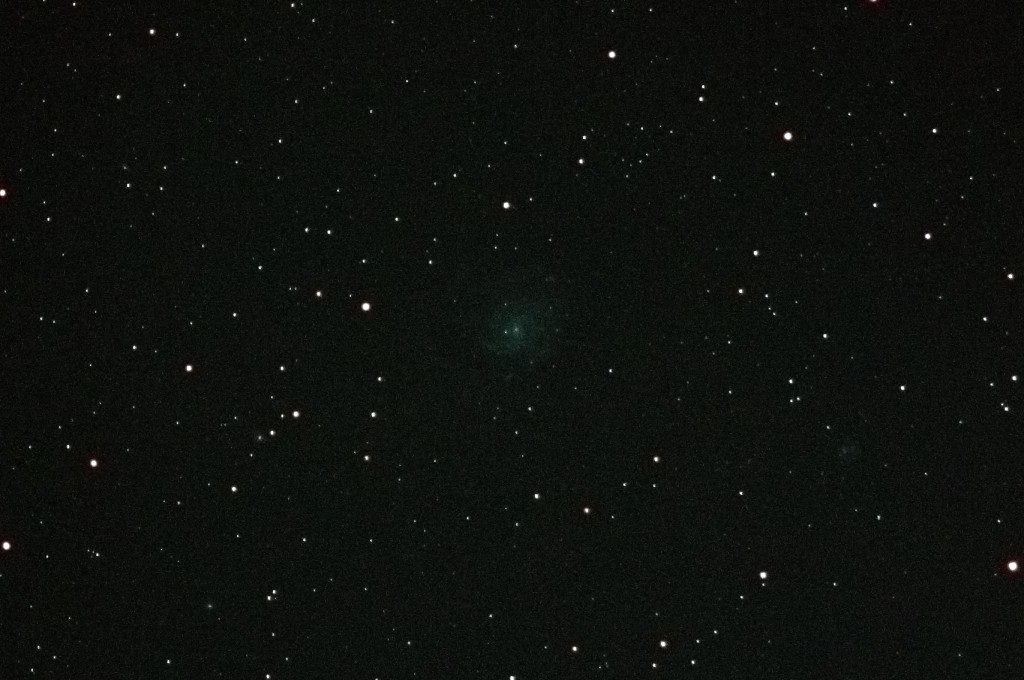
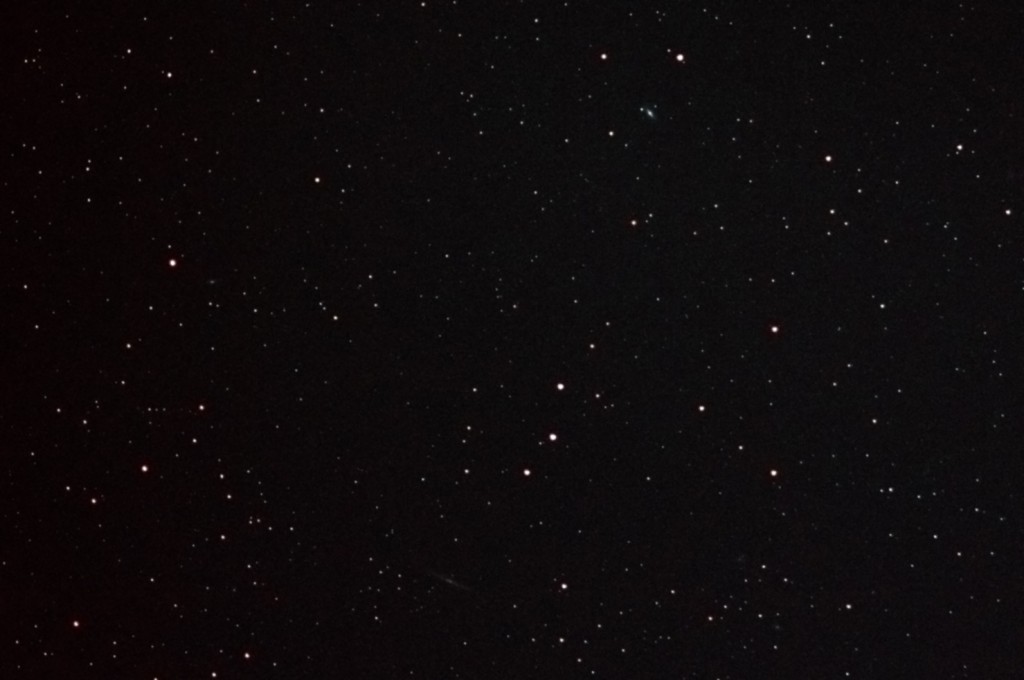

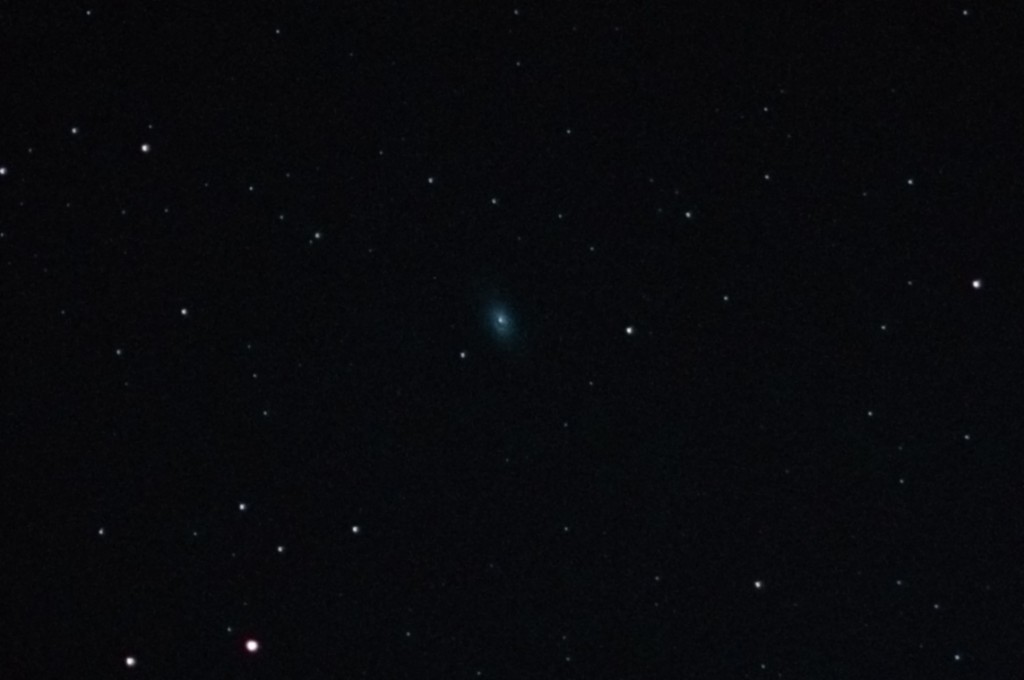
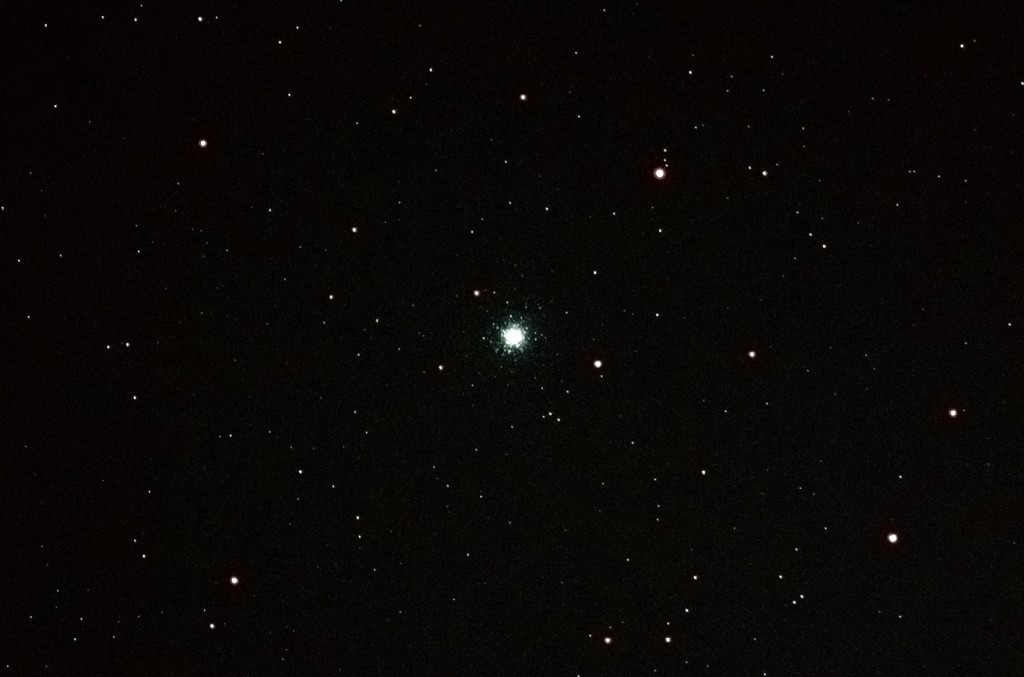
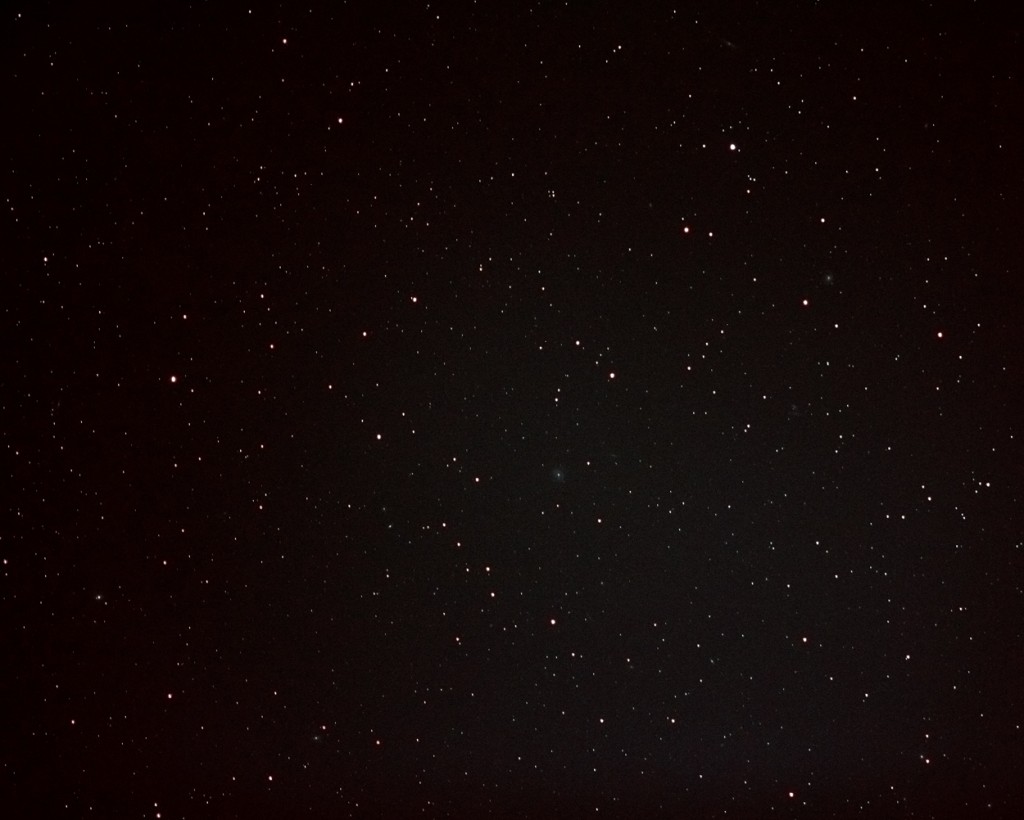
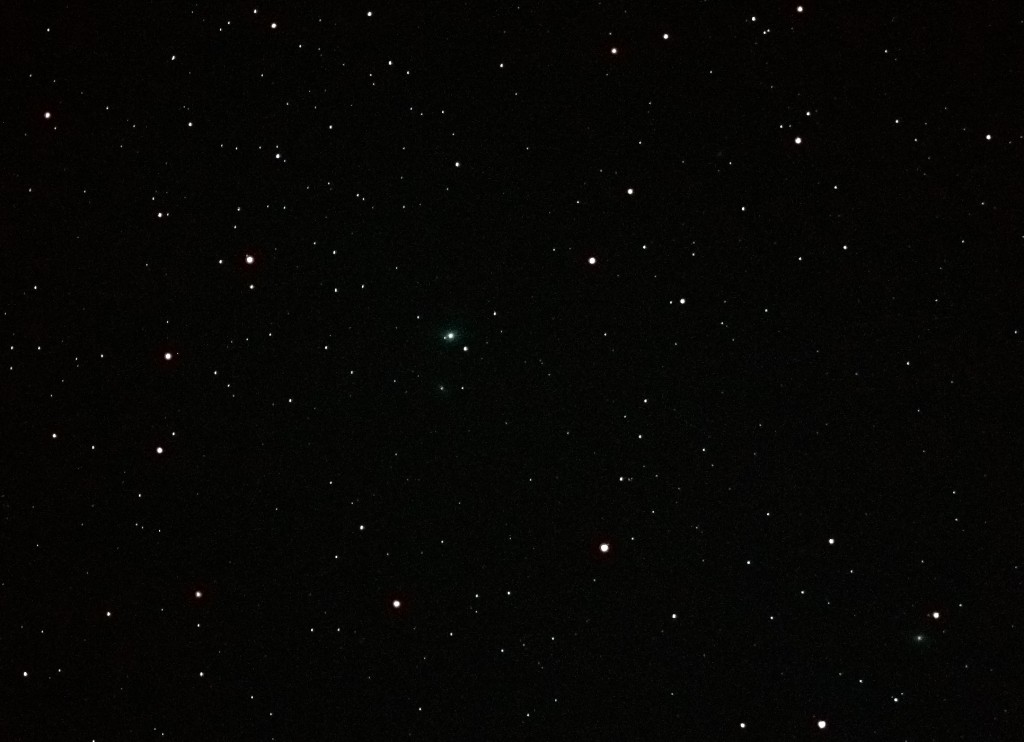
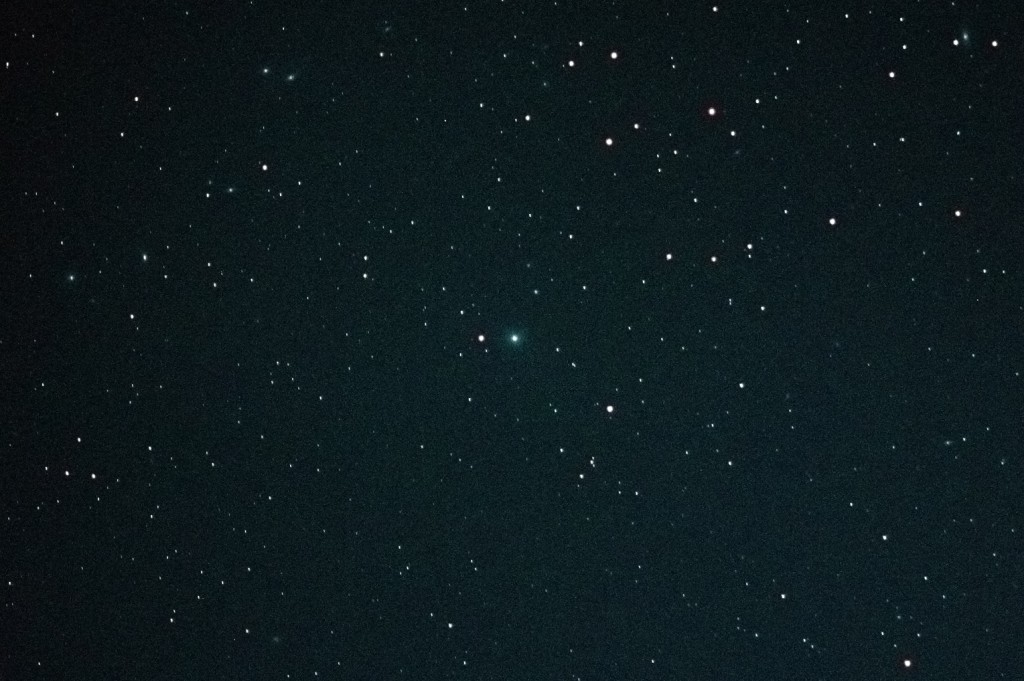
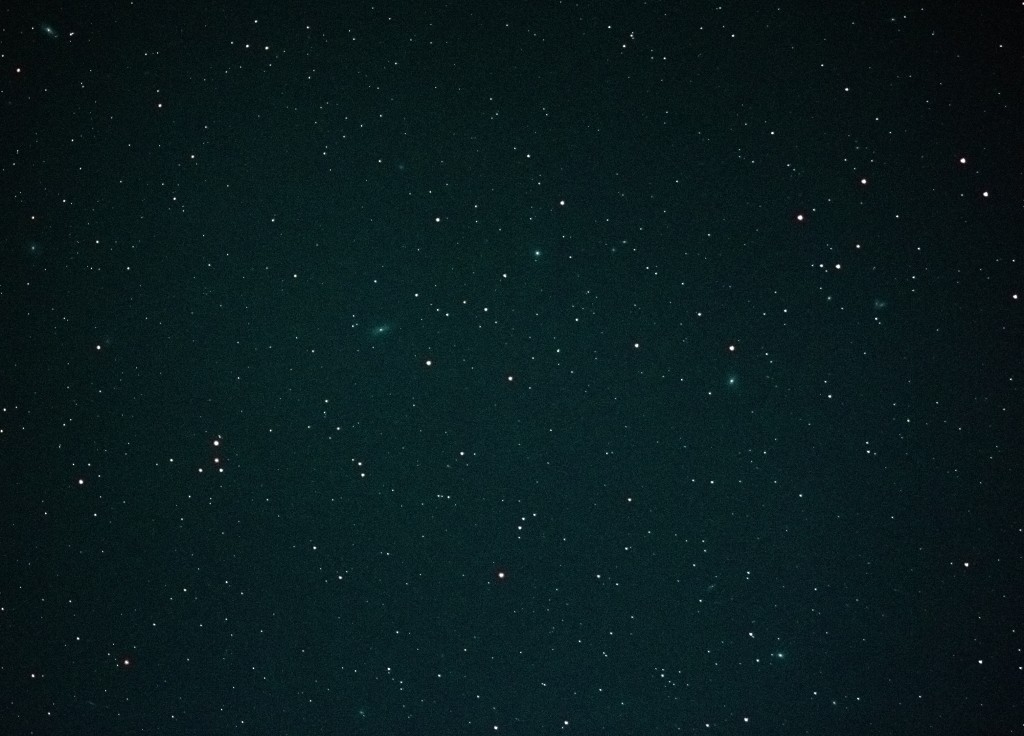
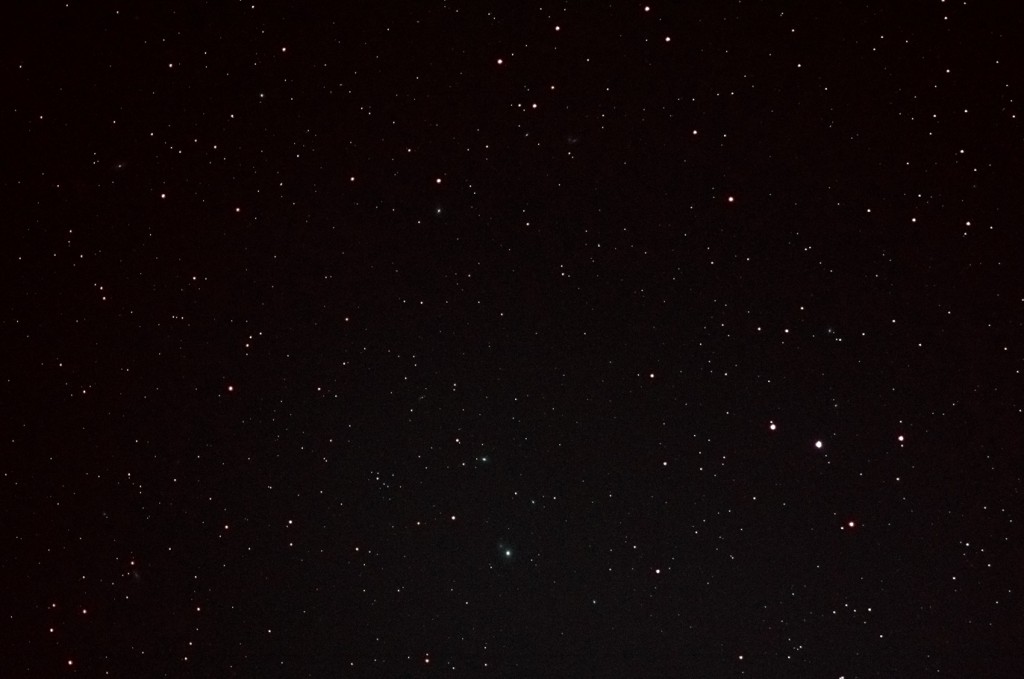
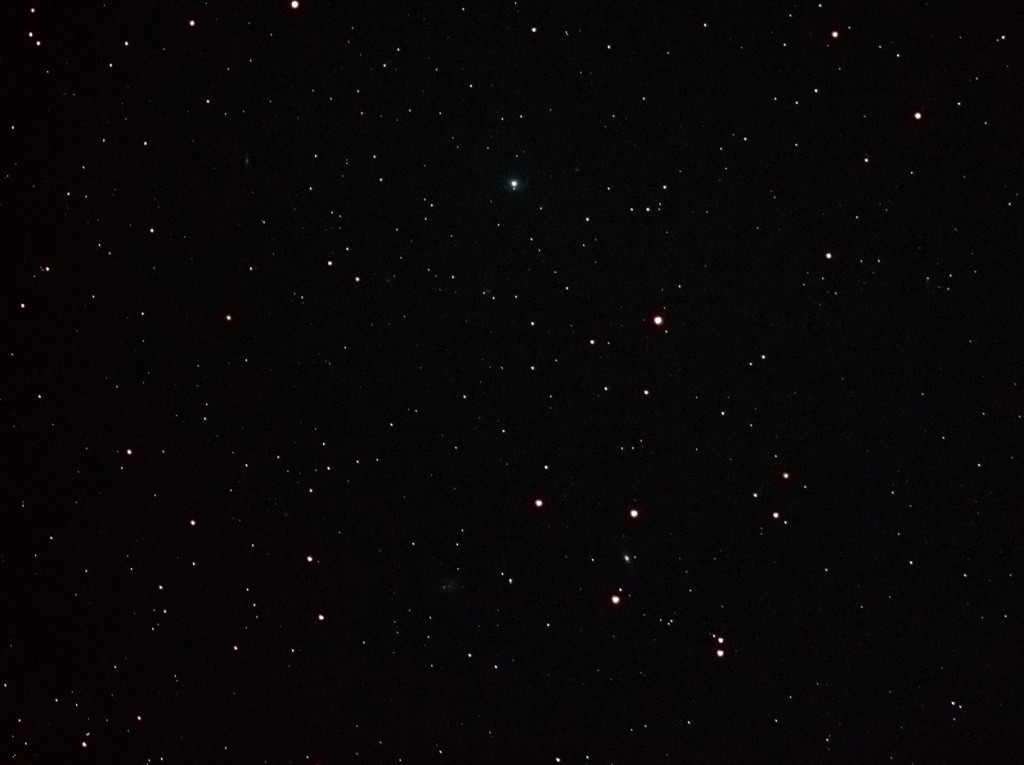
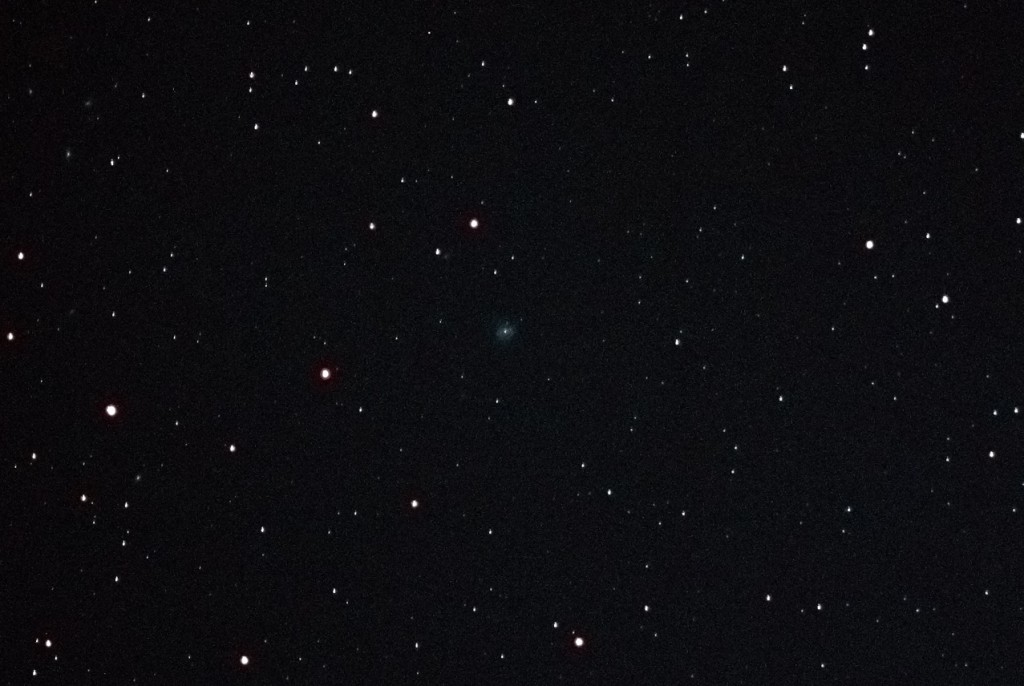
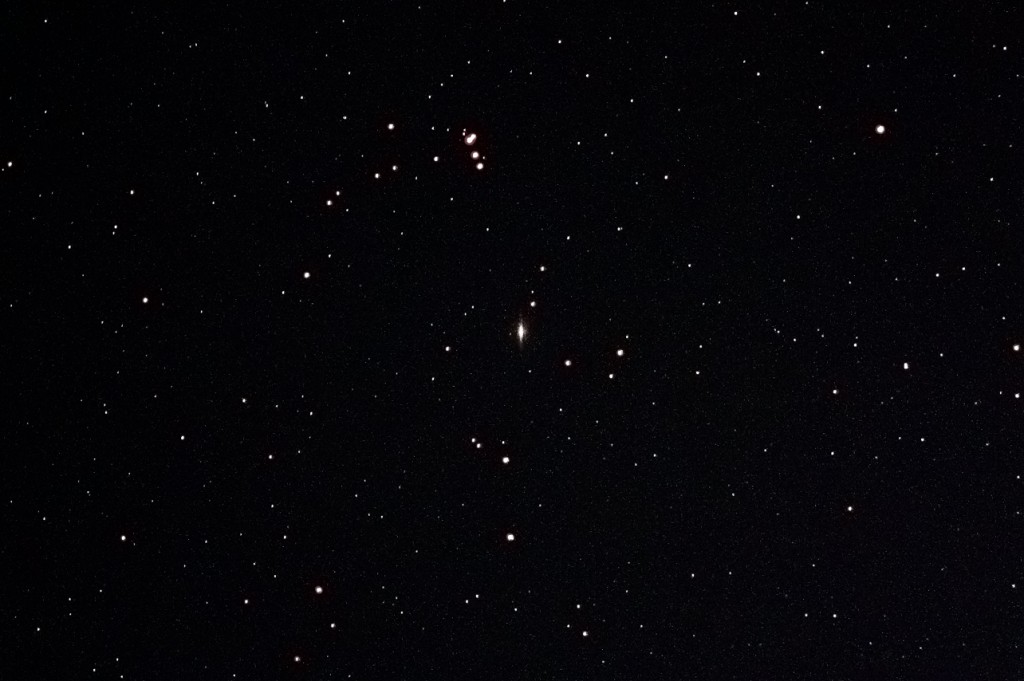
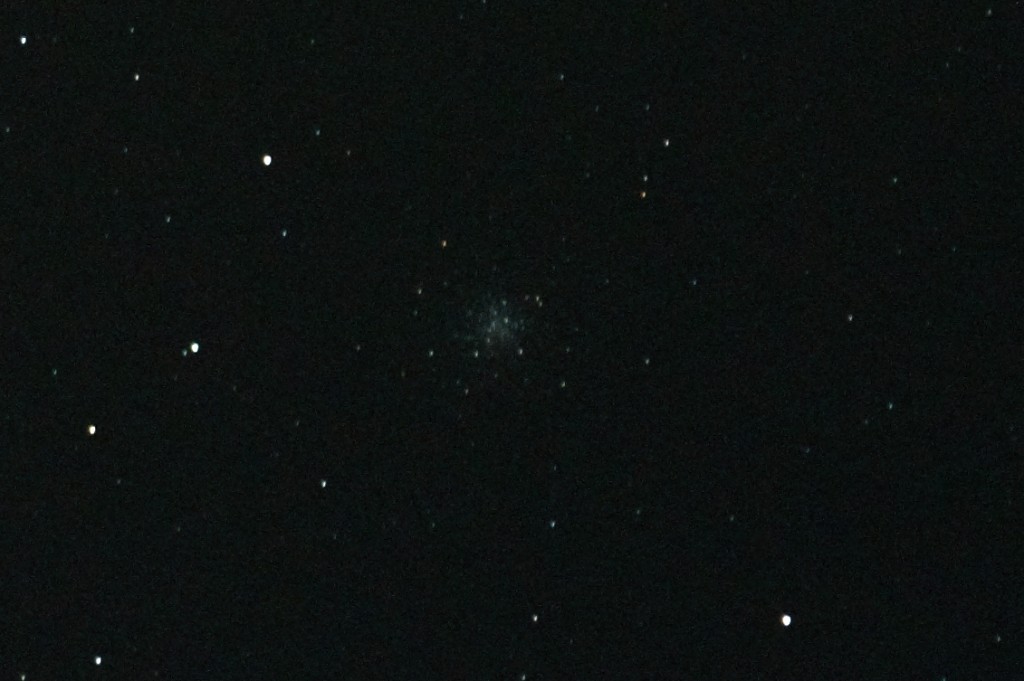
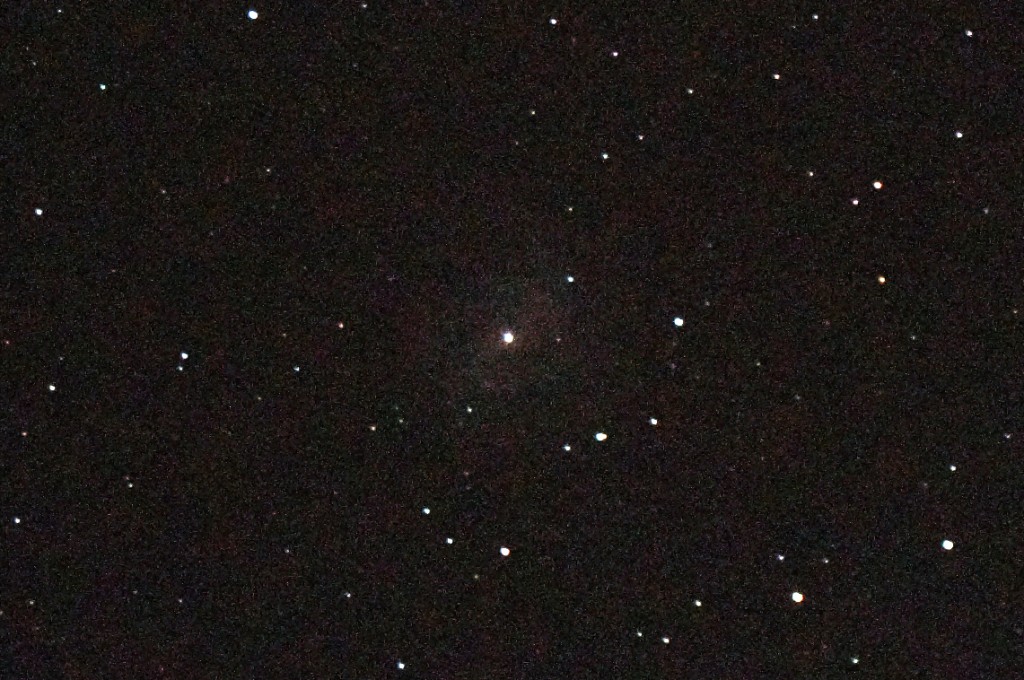
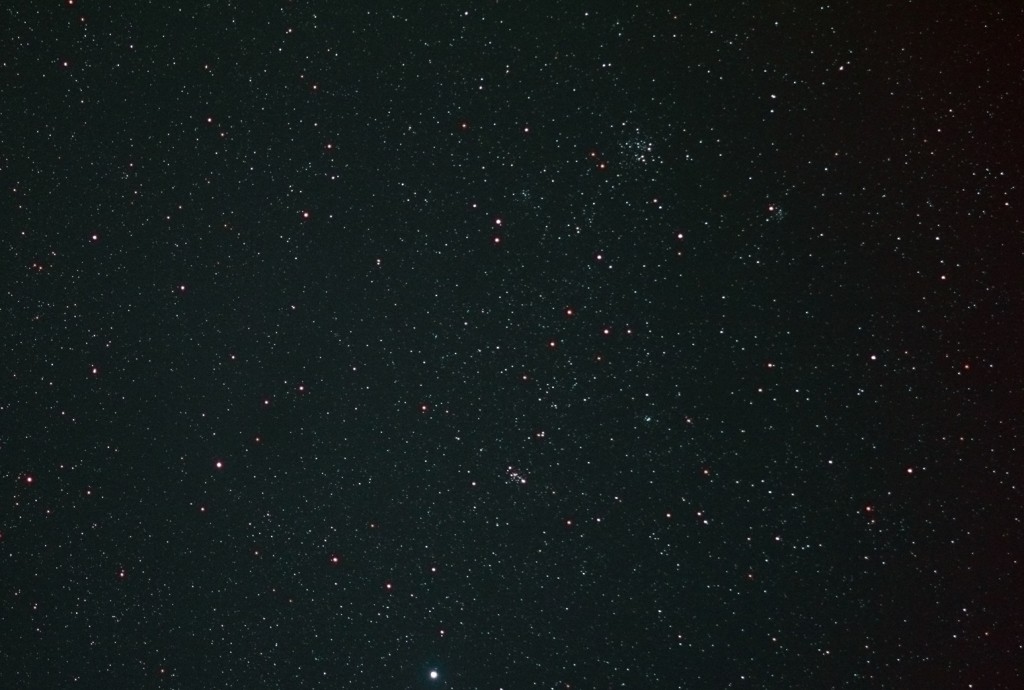
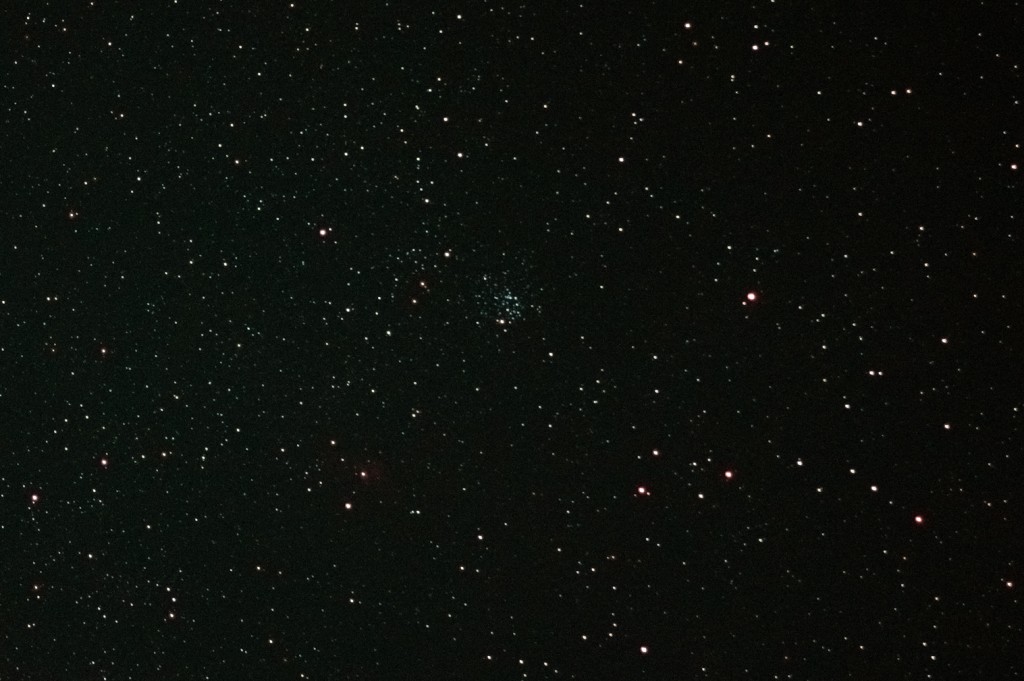
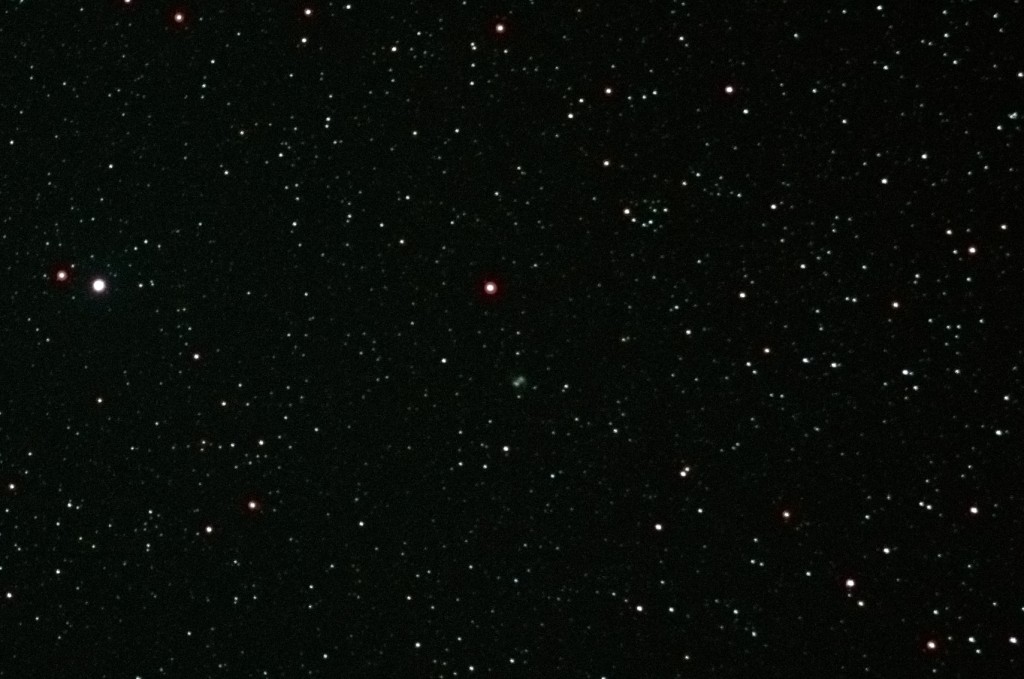
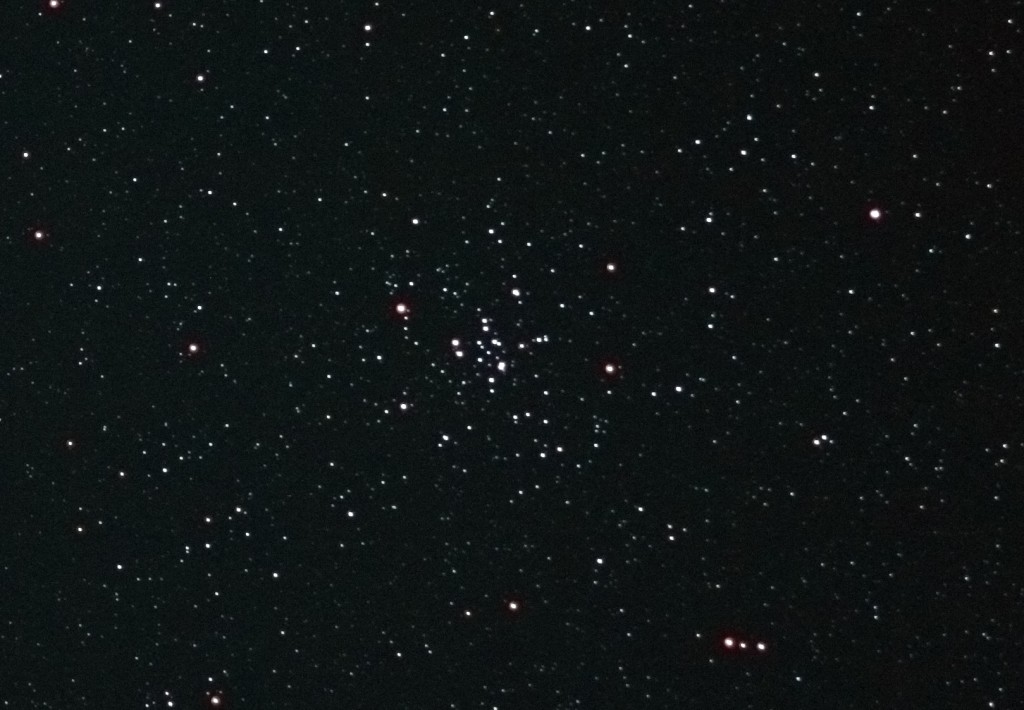
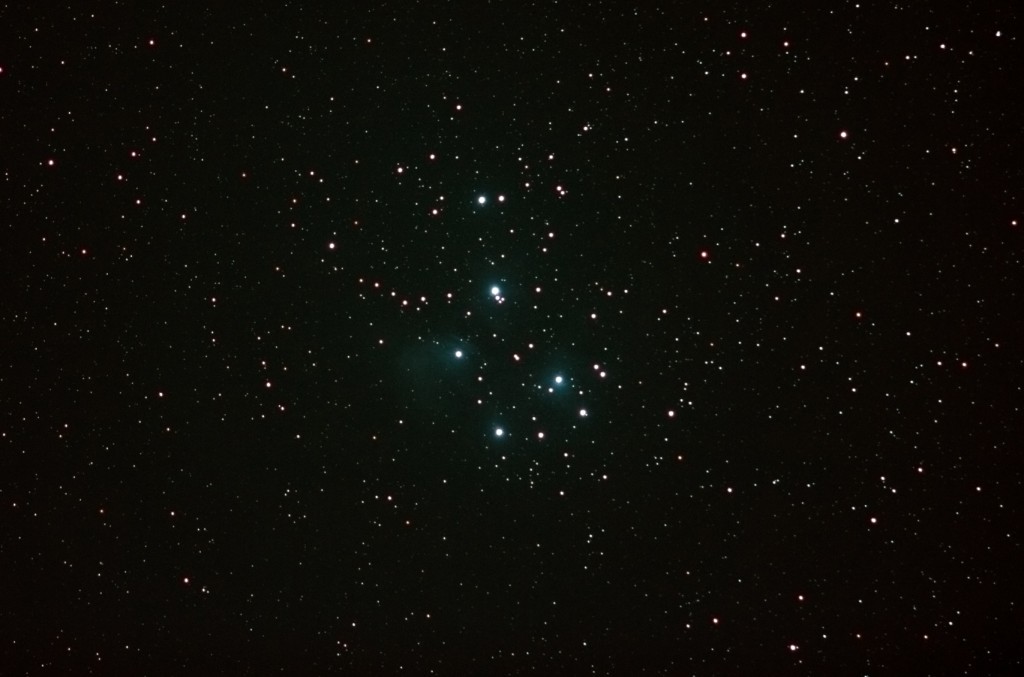
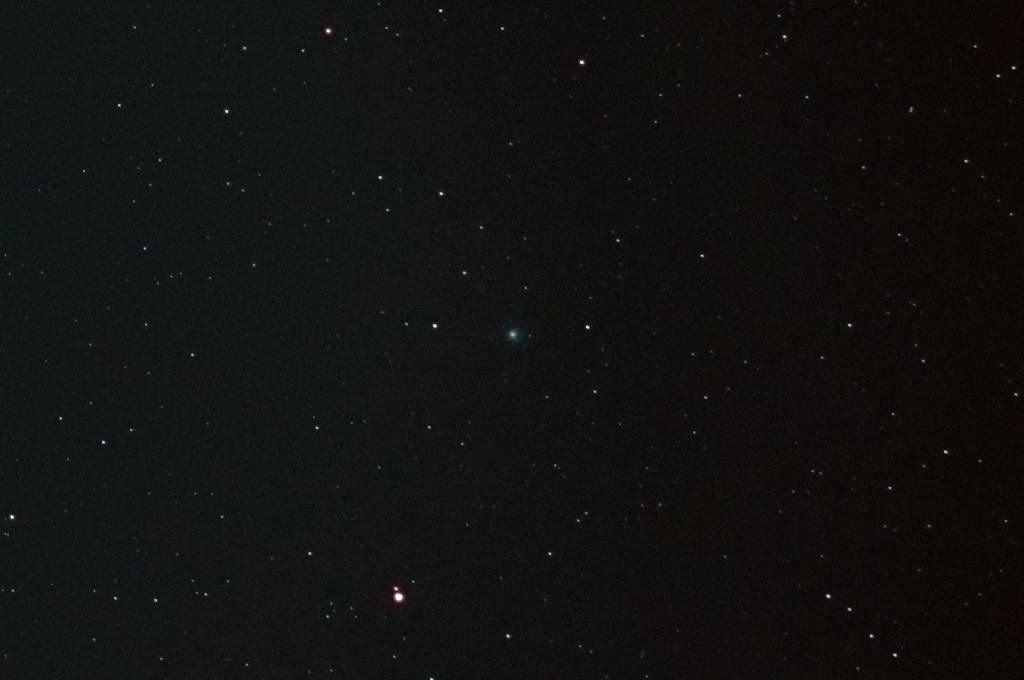
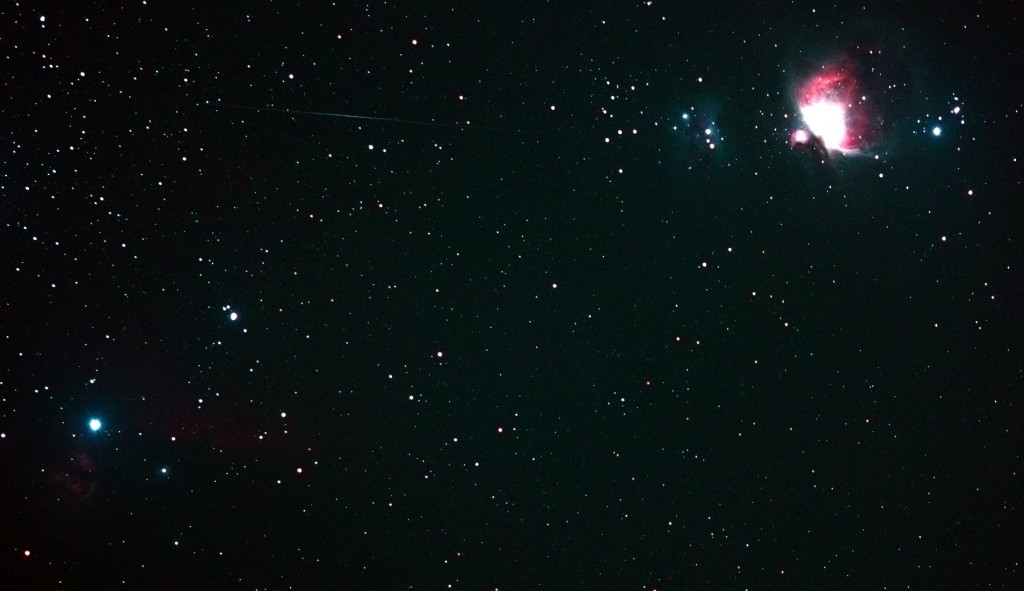
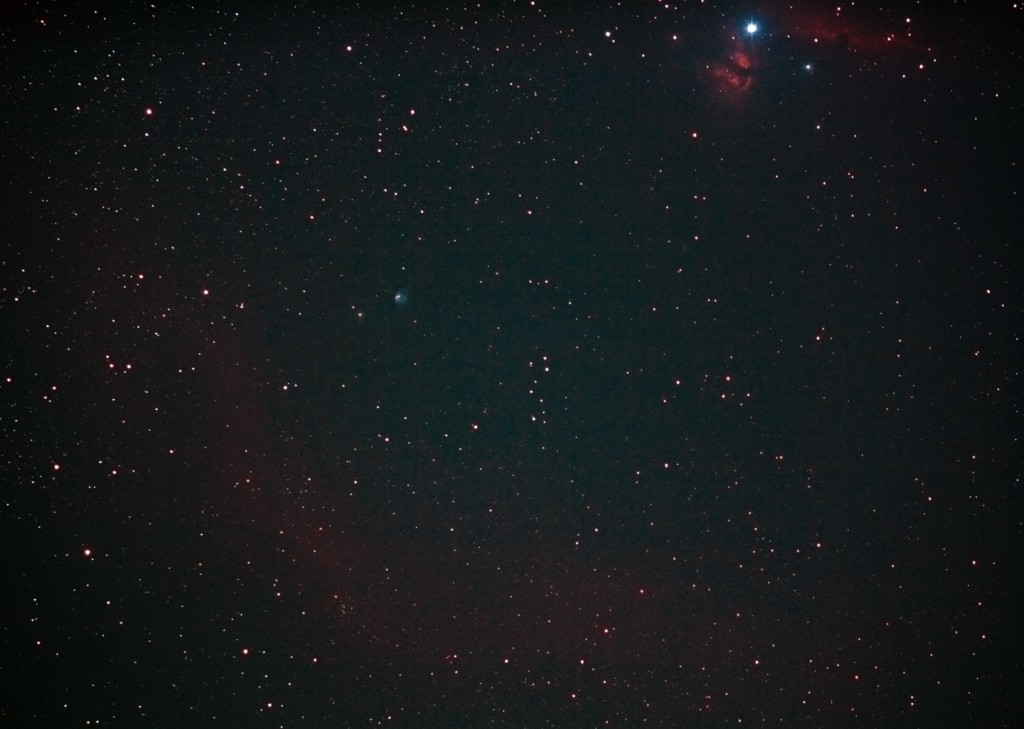
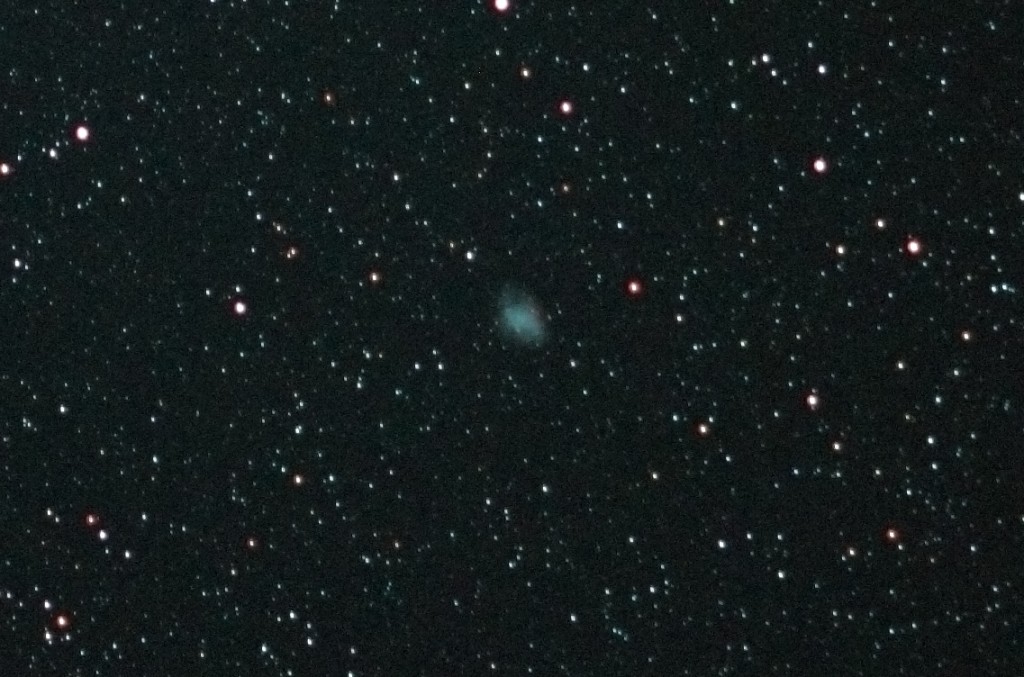
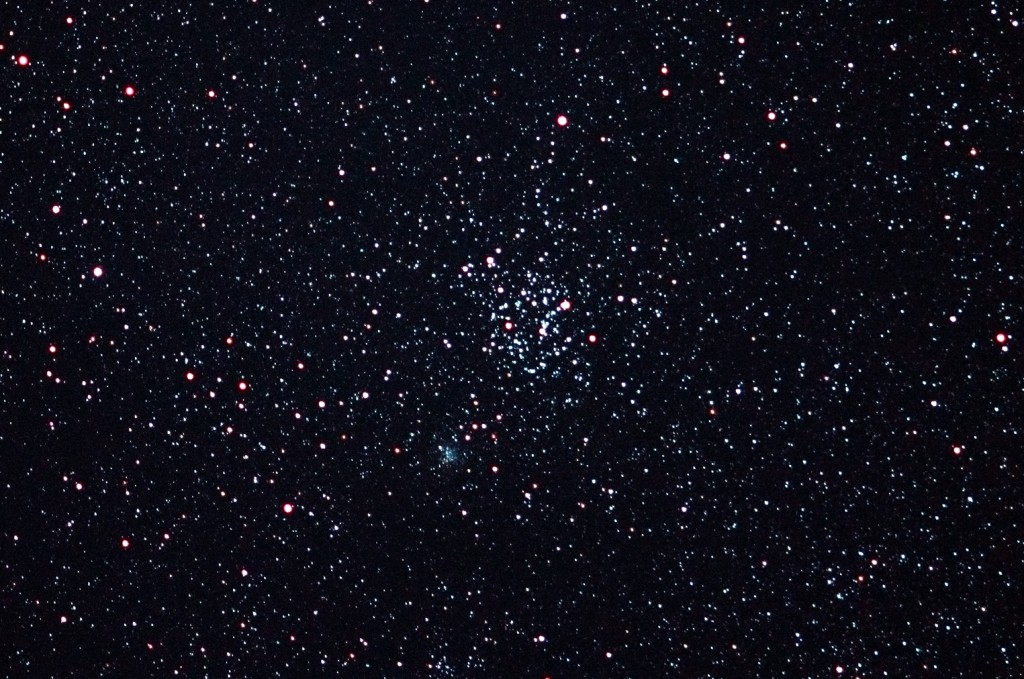
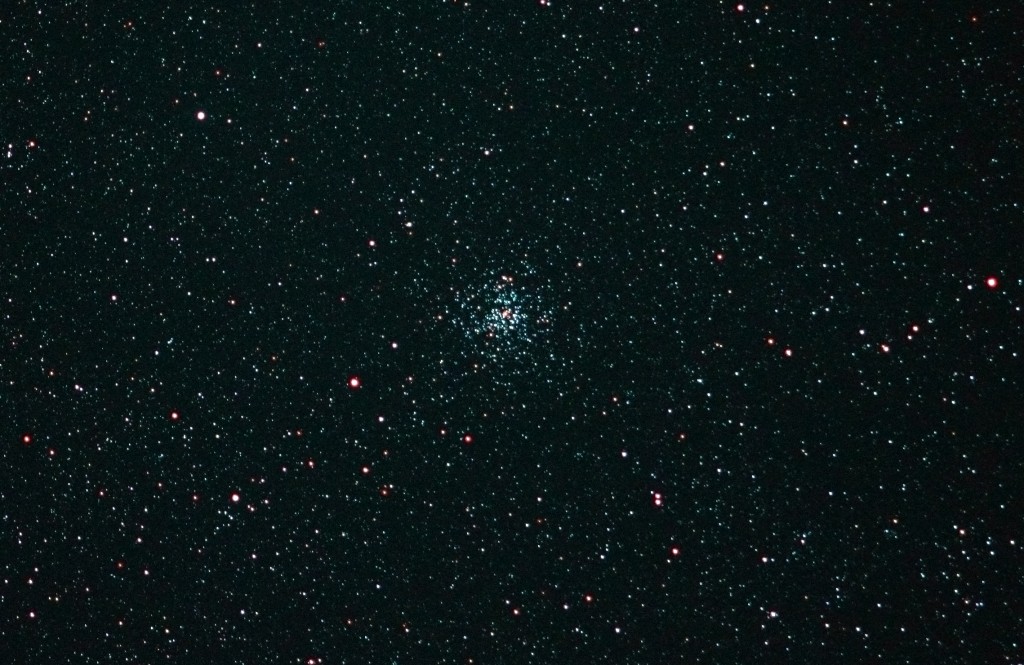
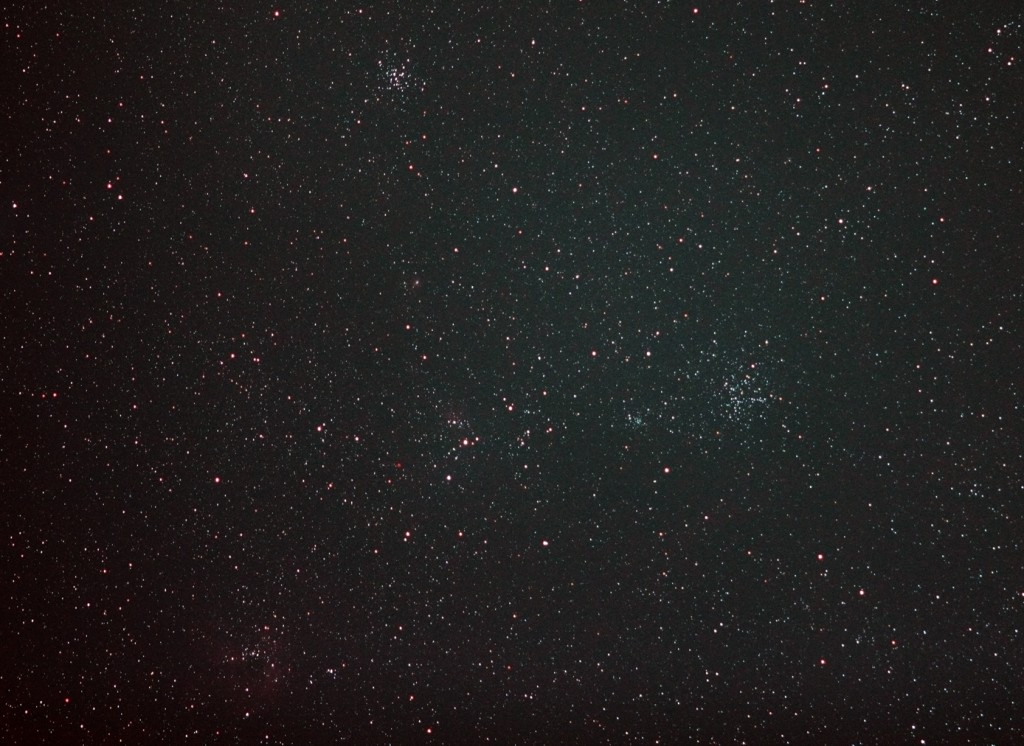
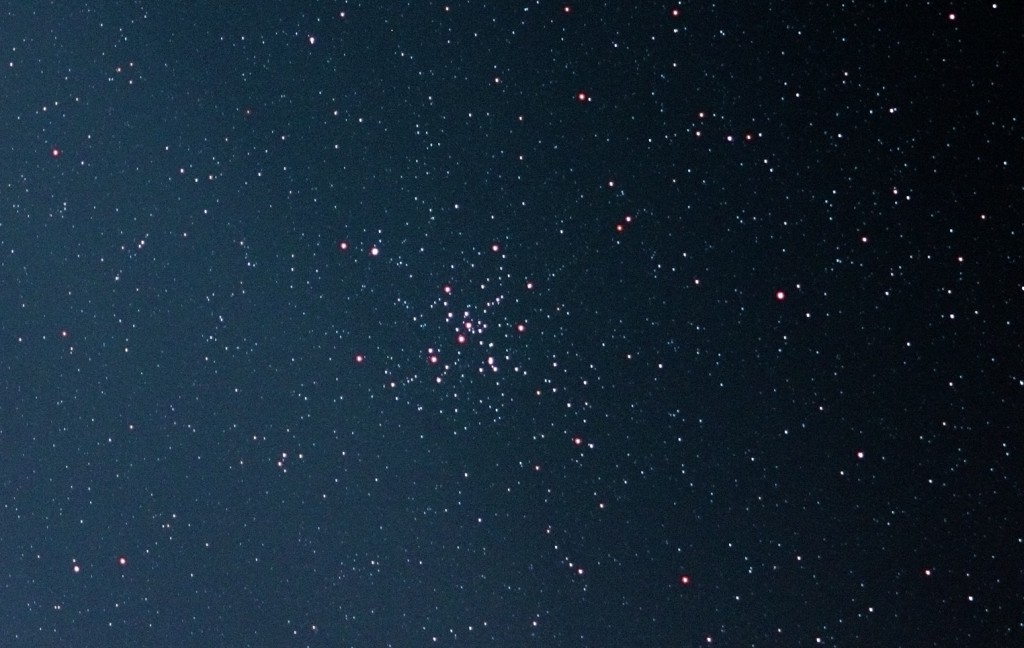
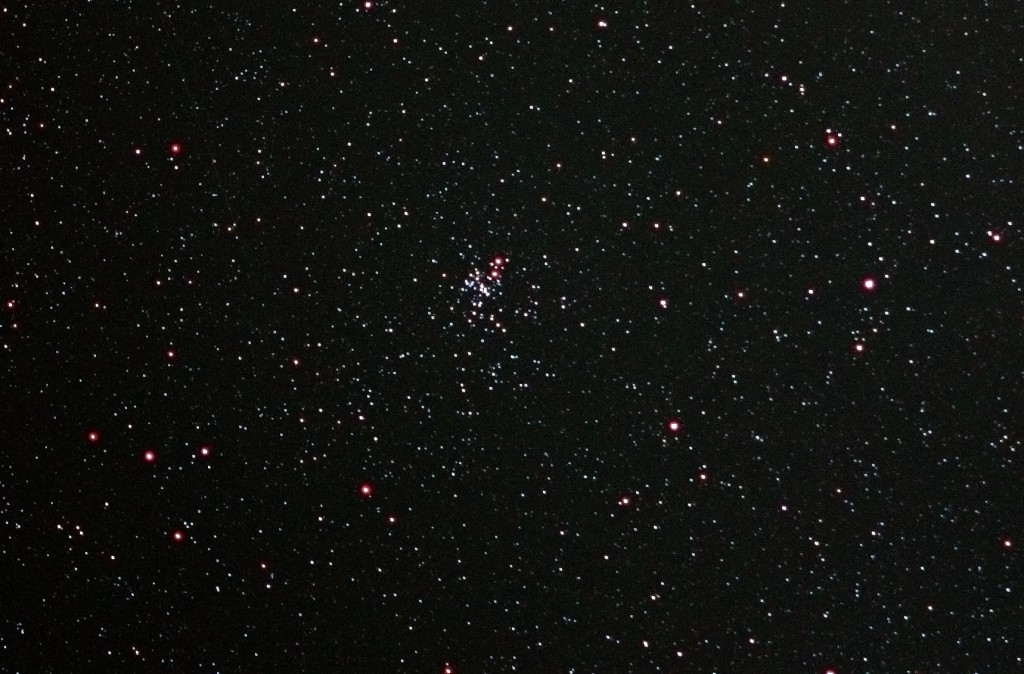
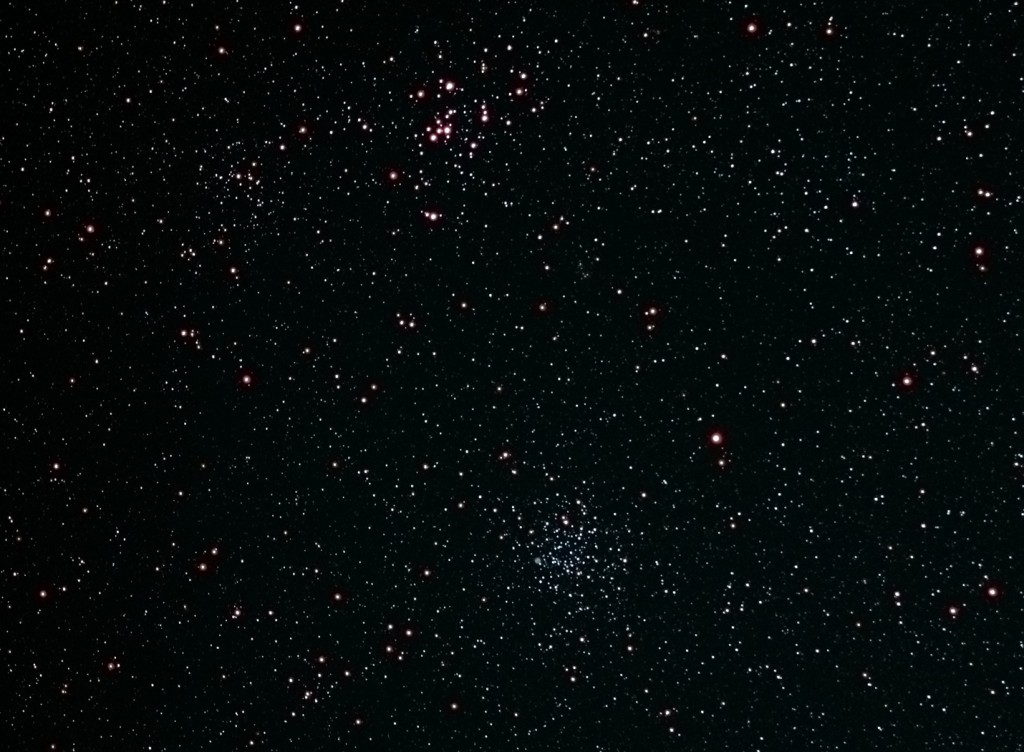
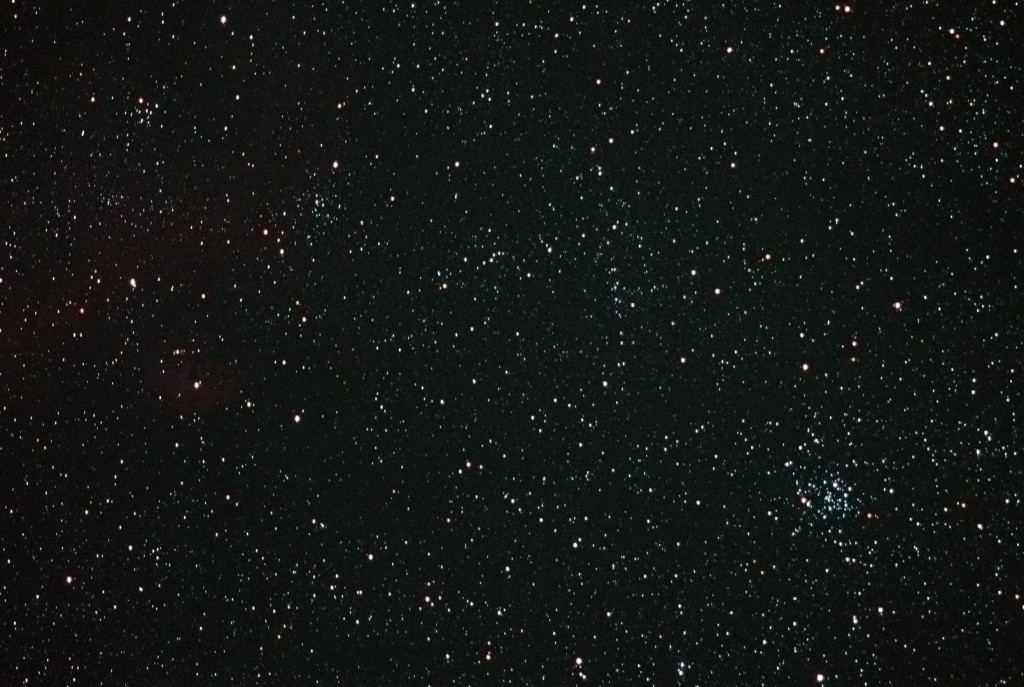
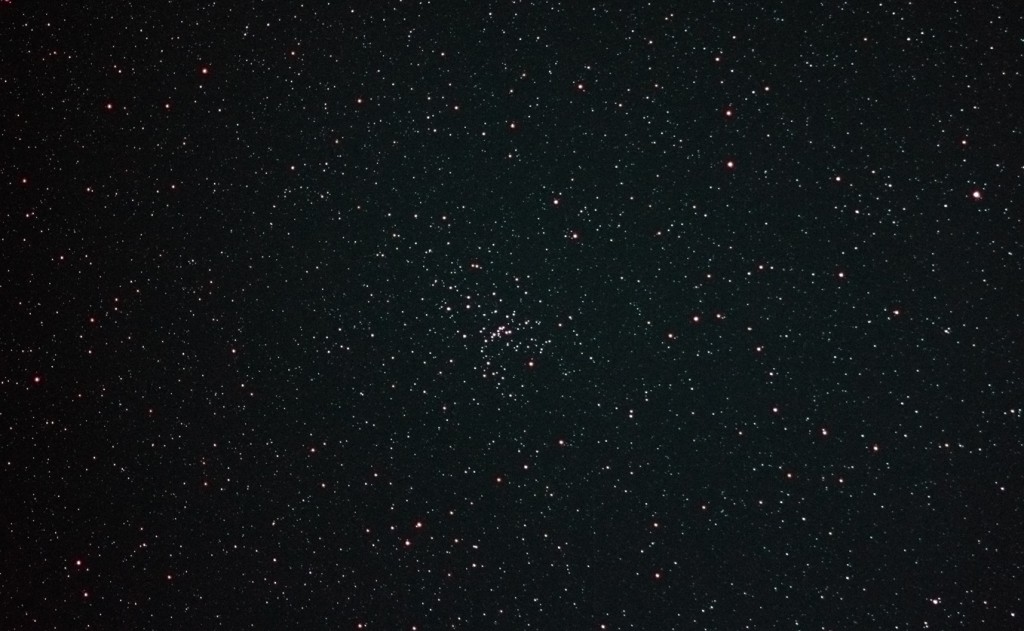
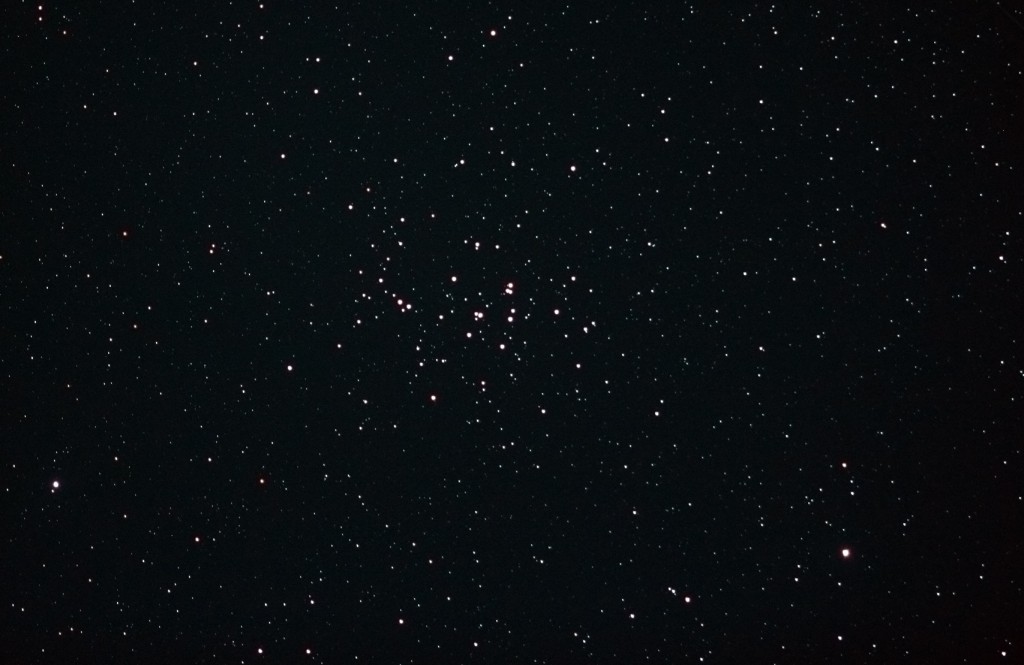
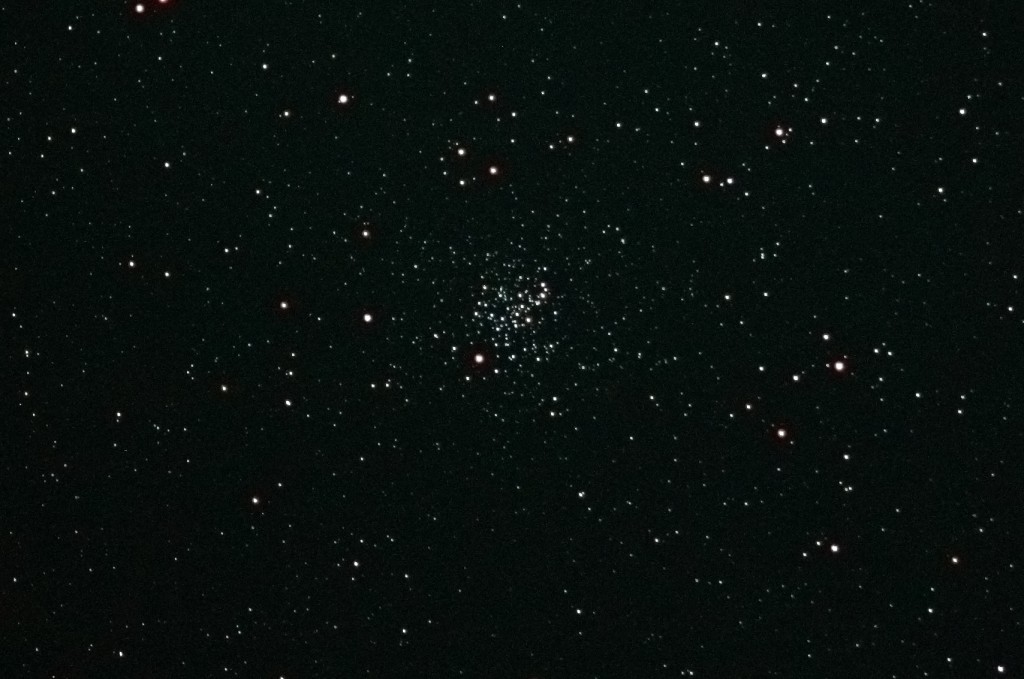
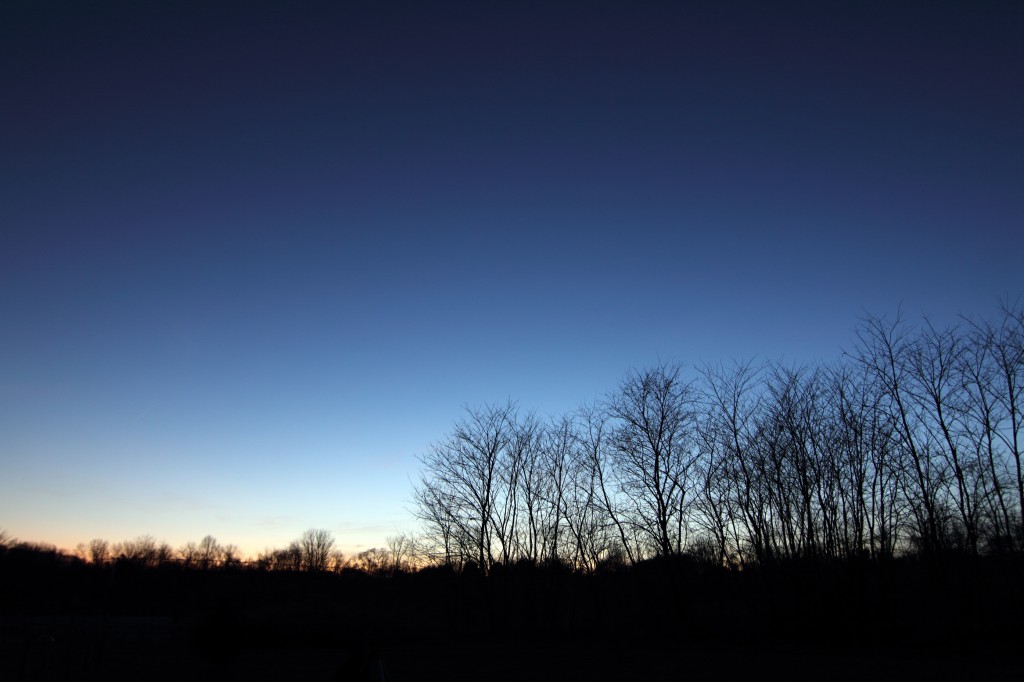
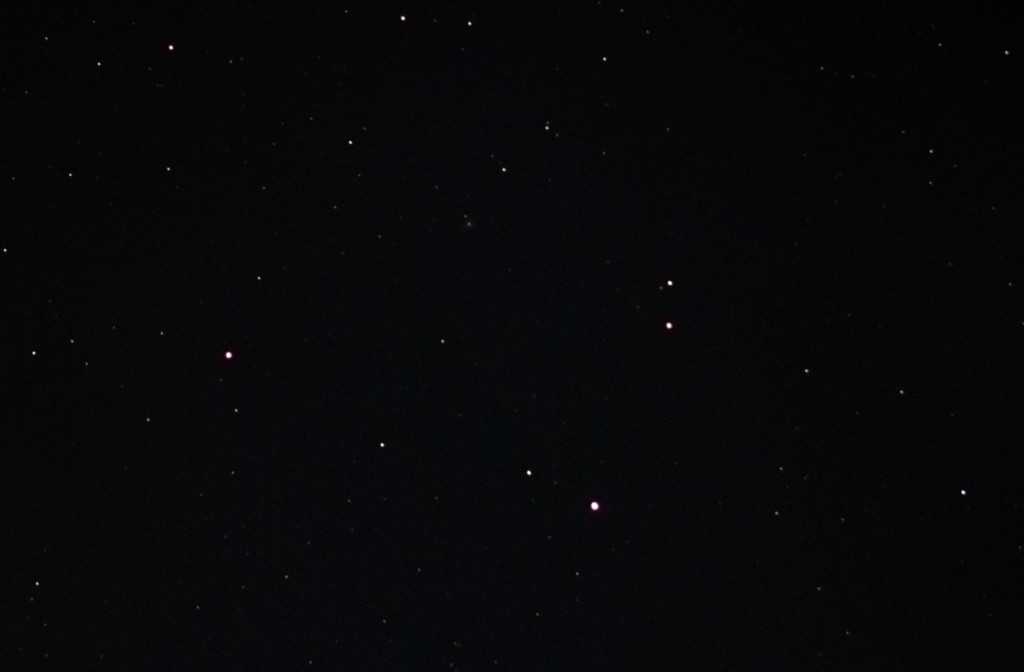
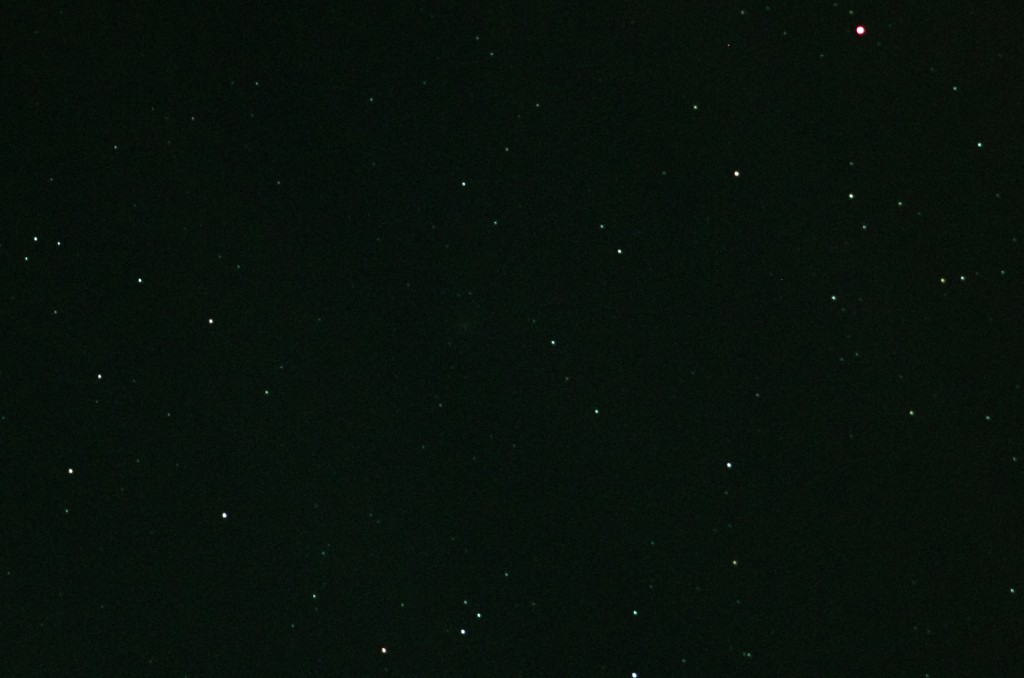
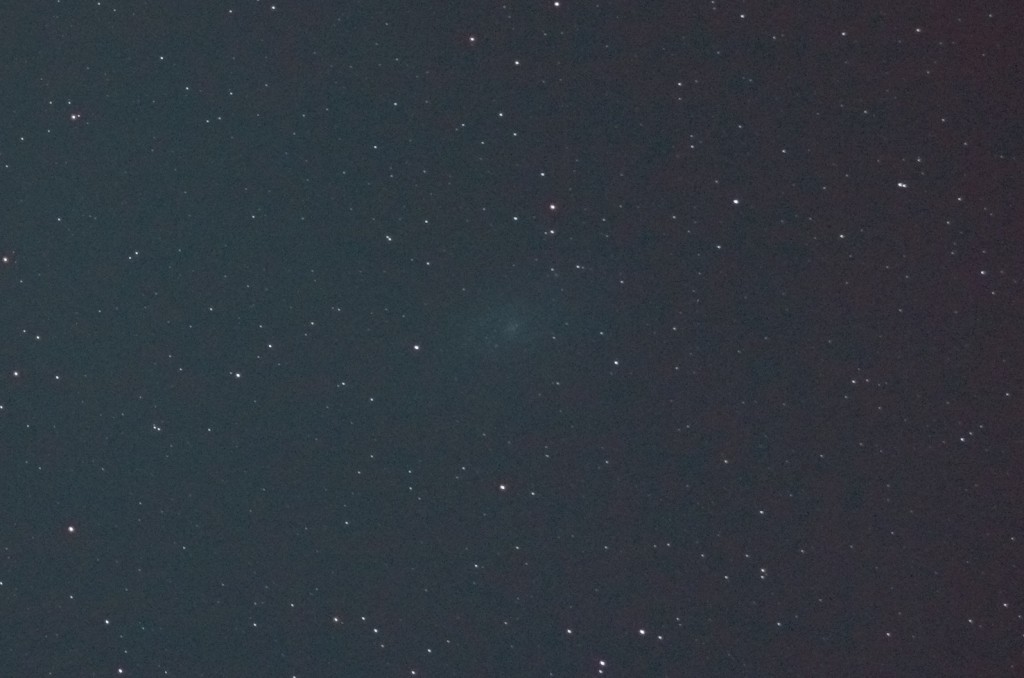
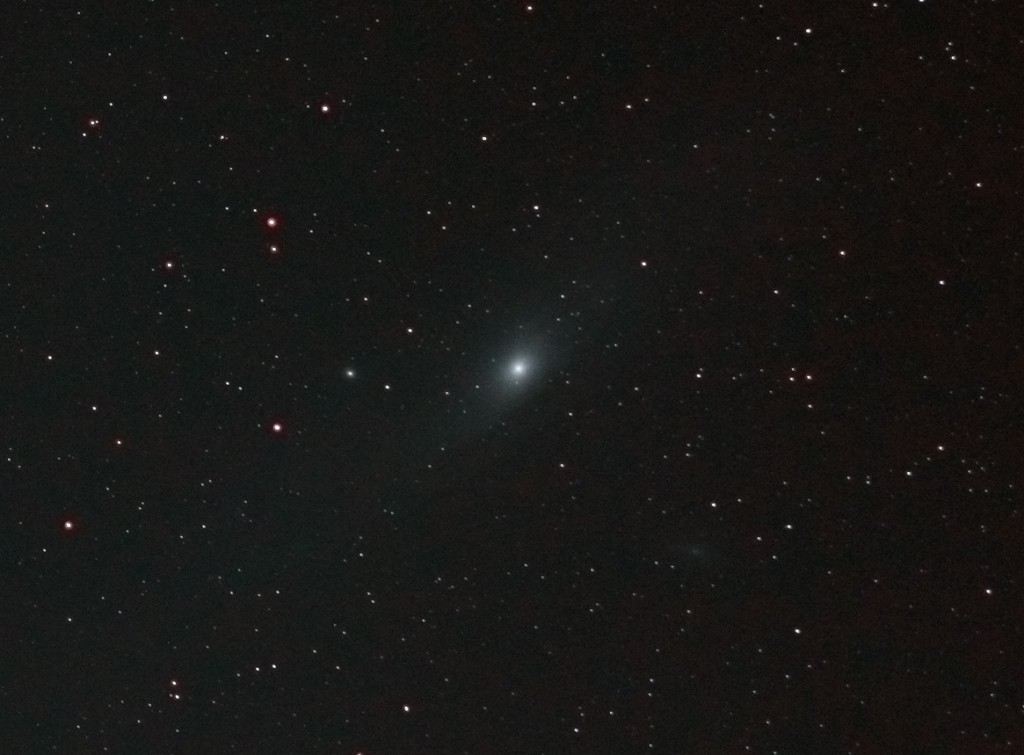
Recent Comments